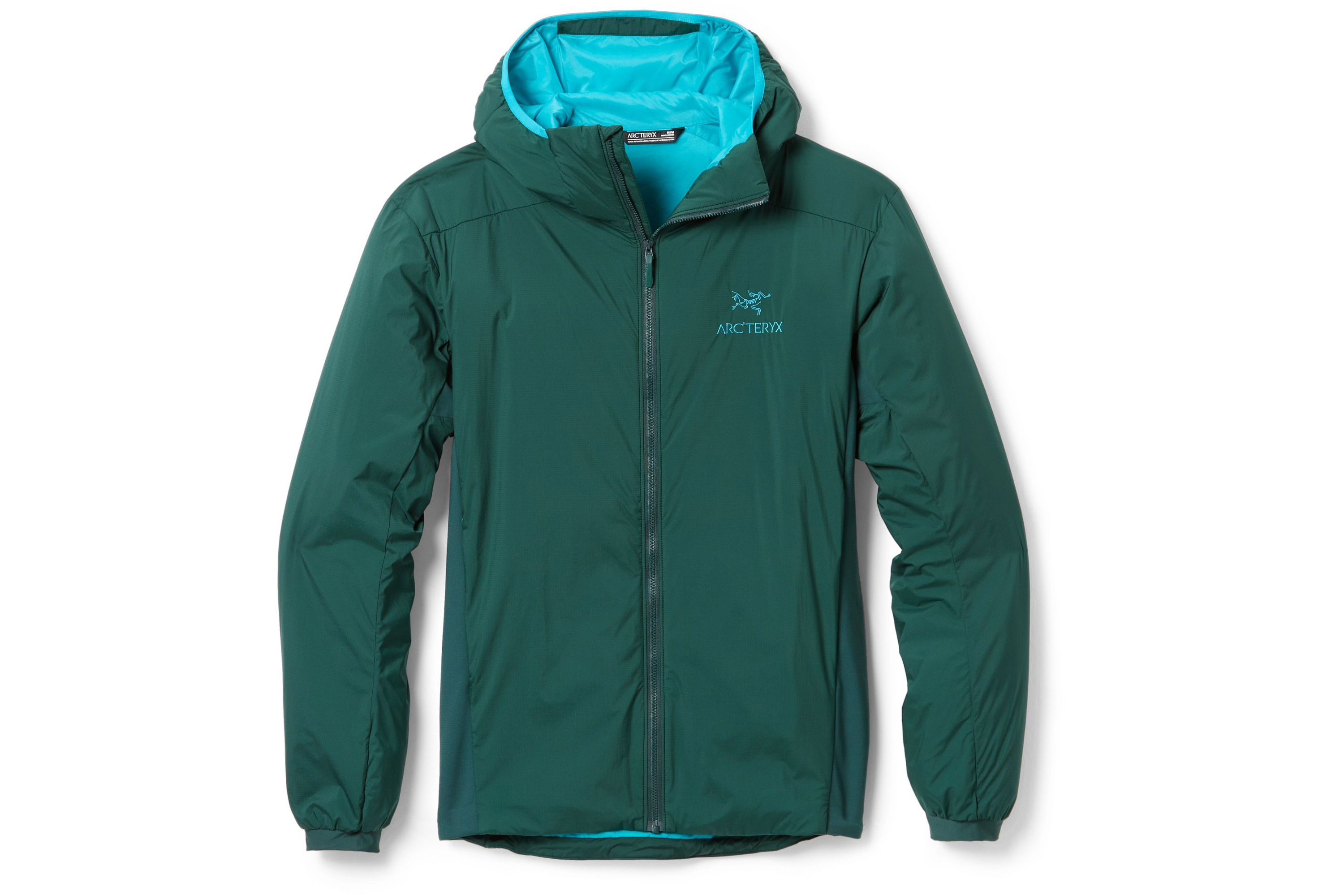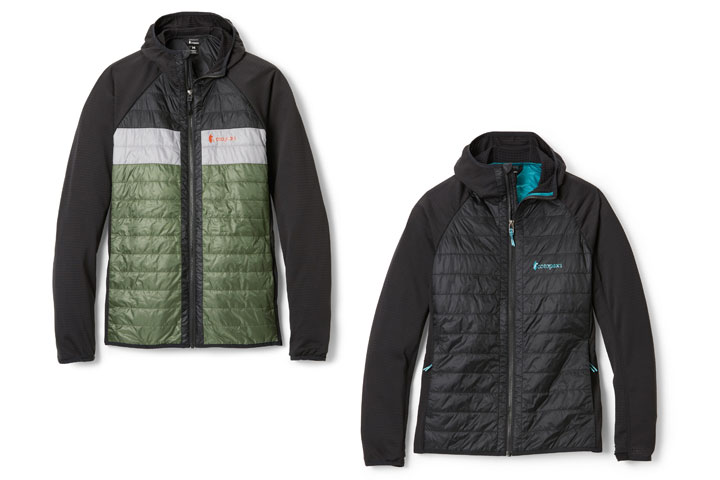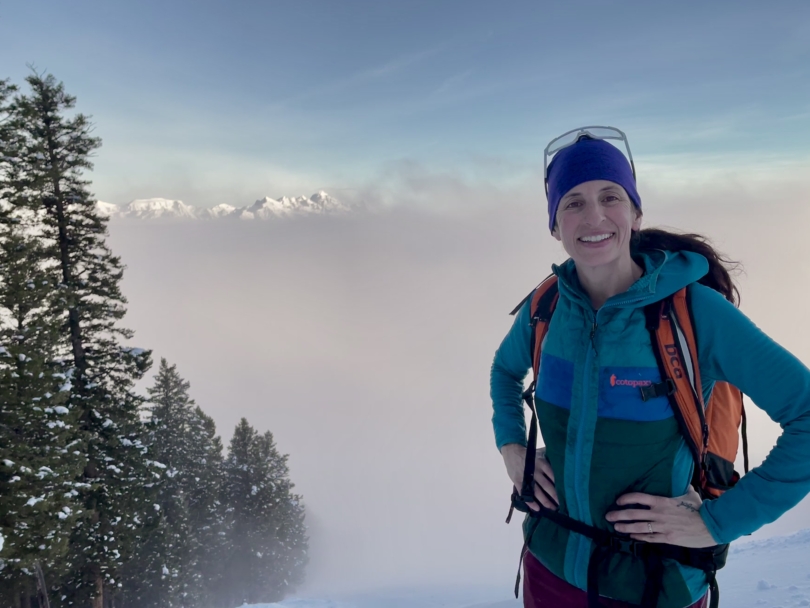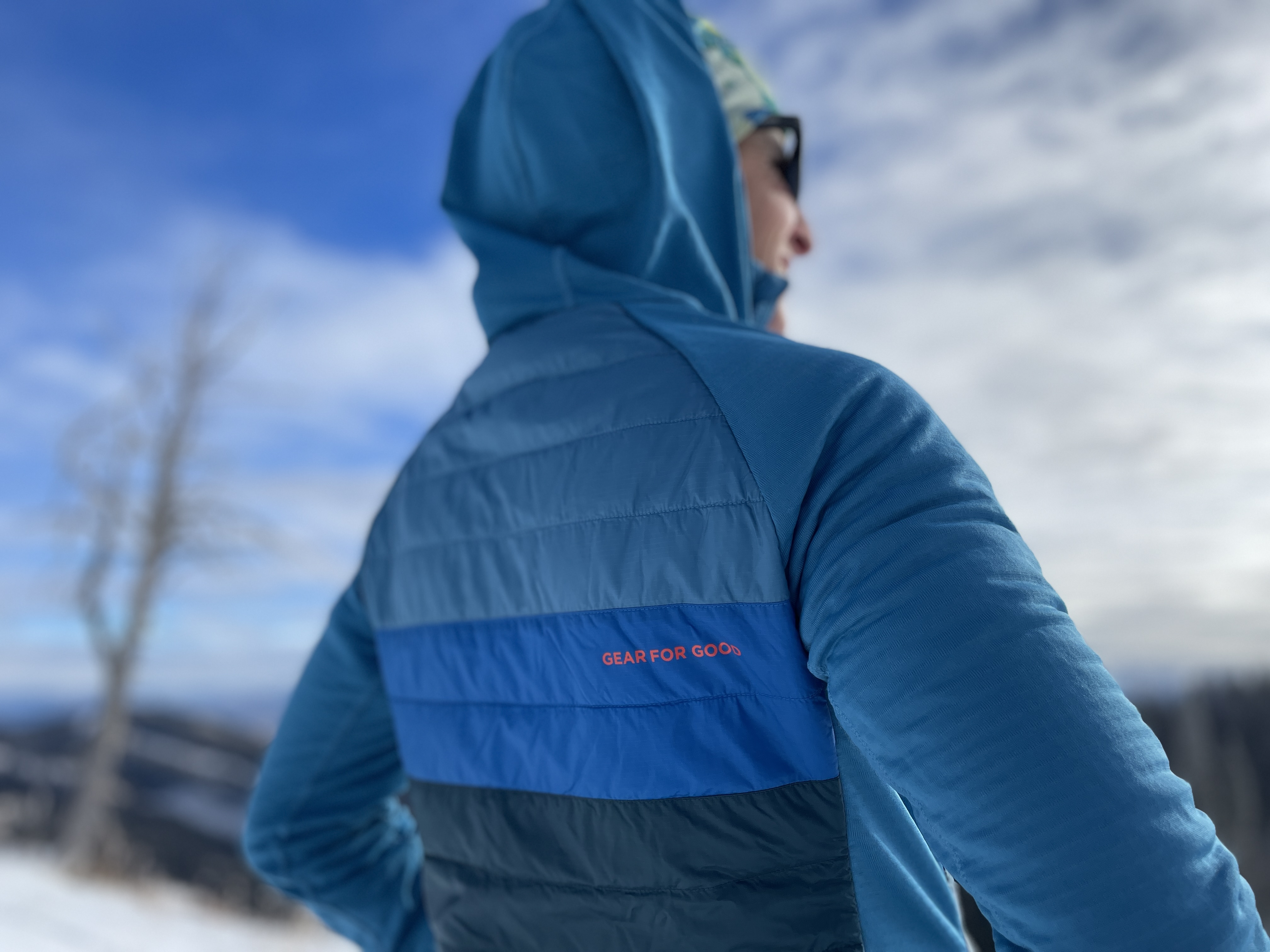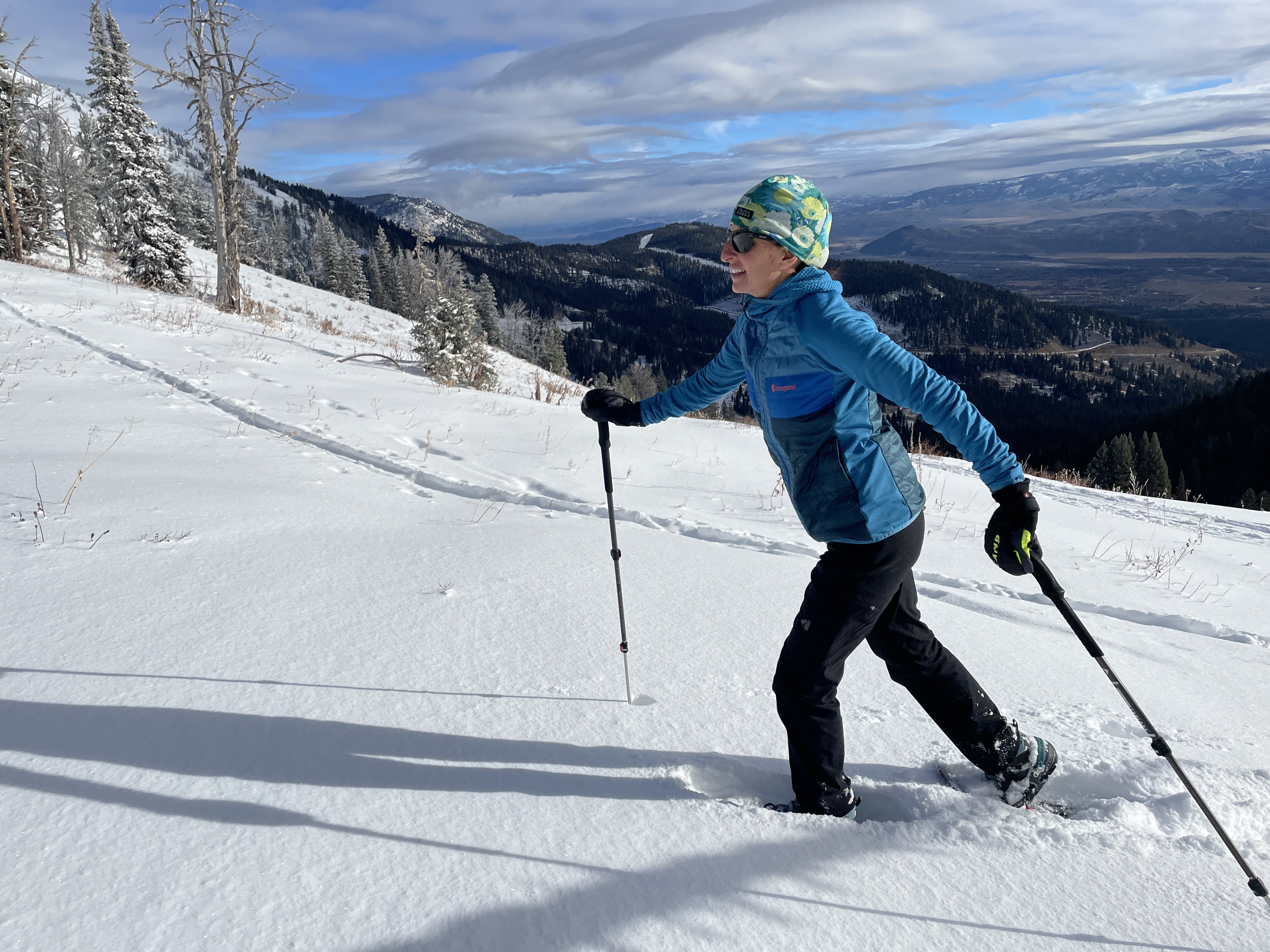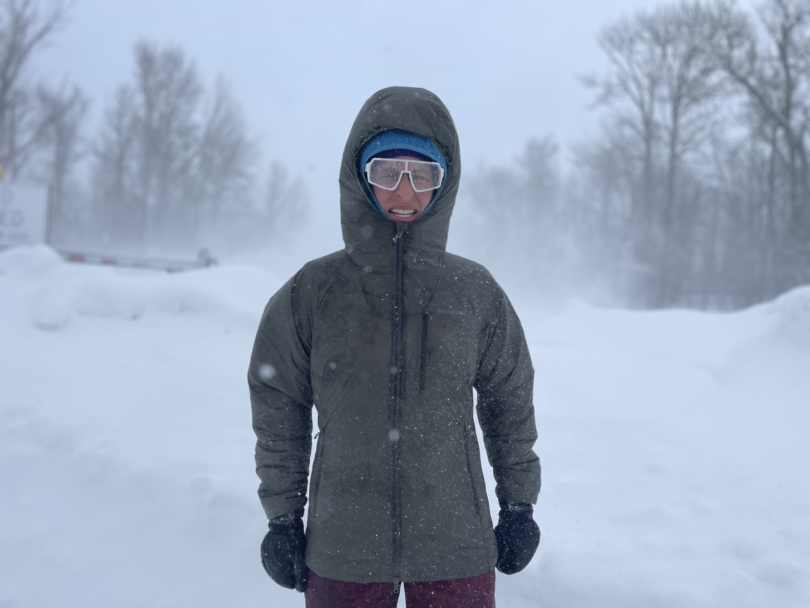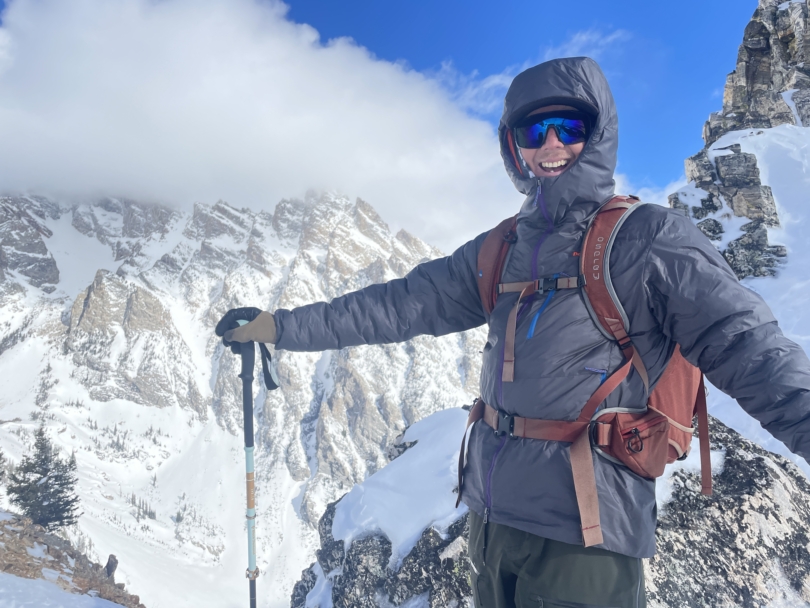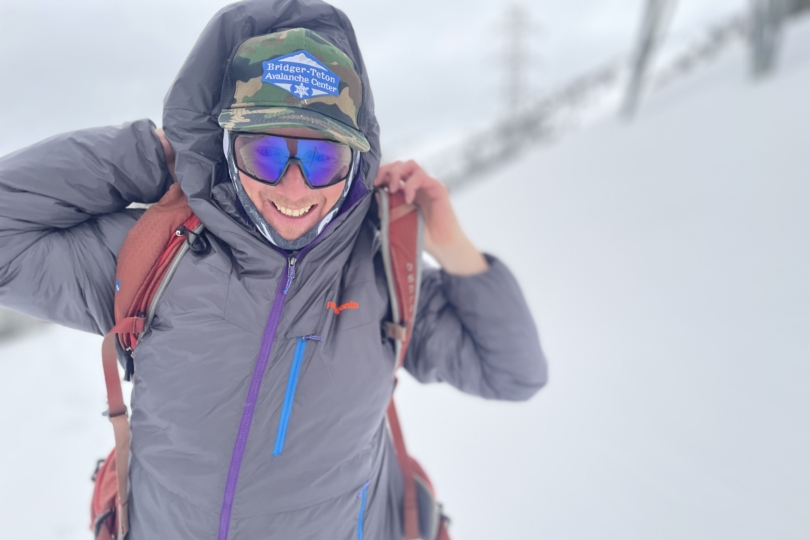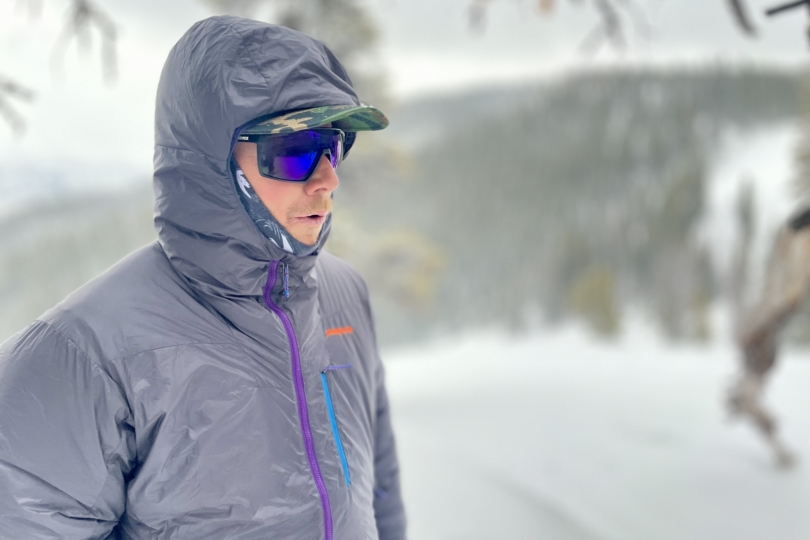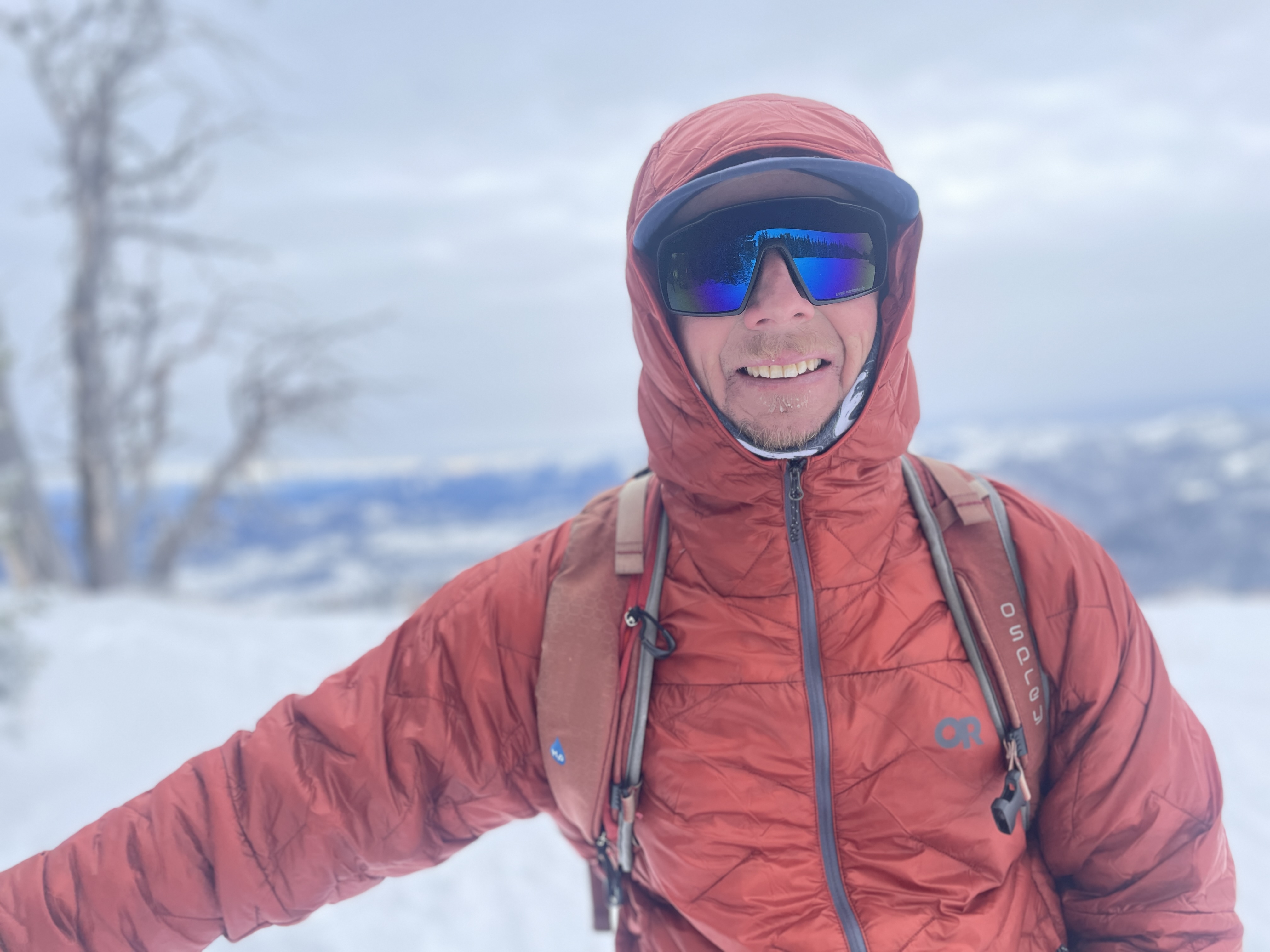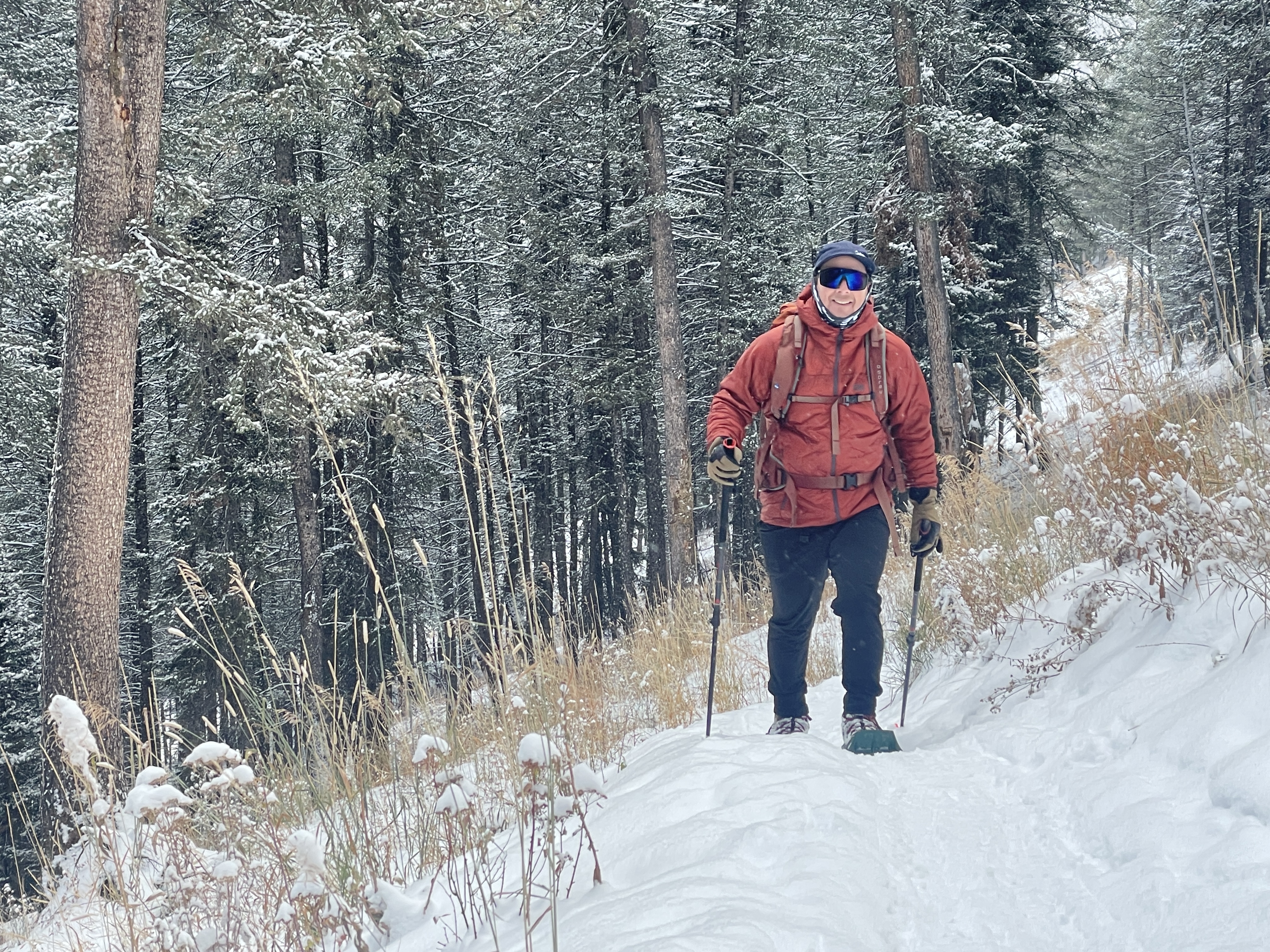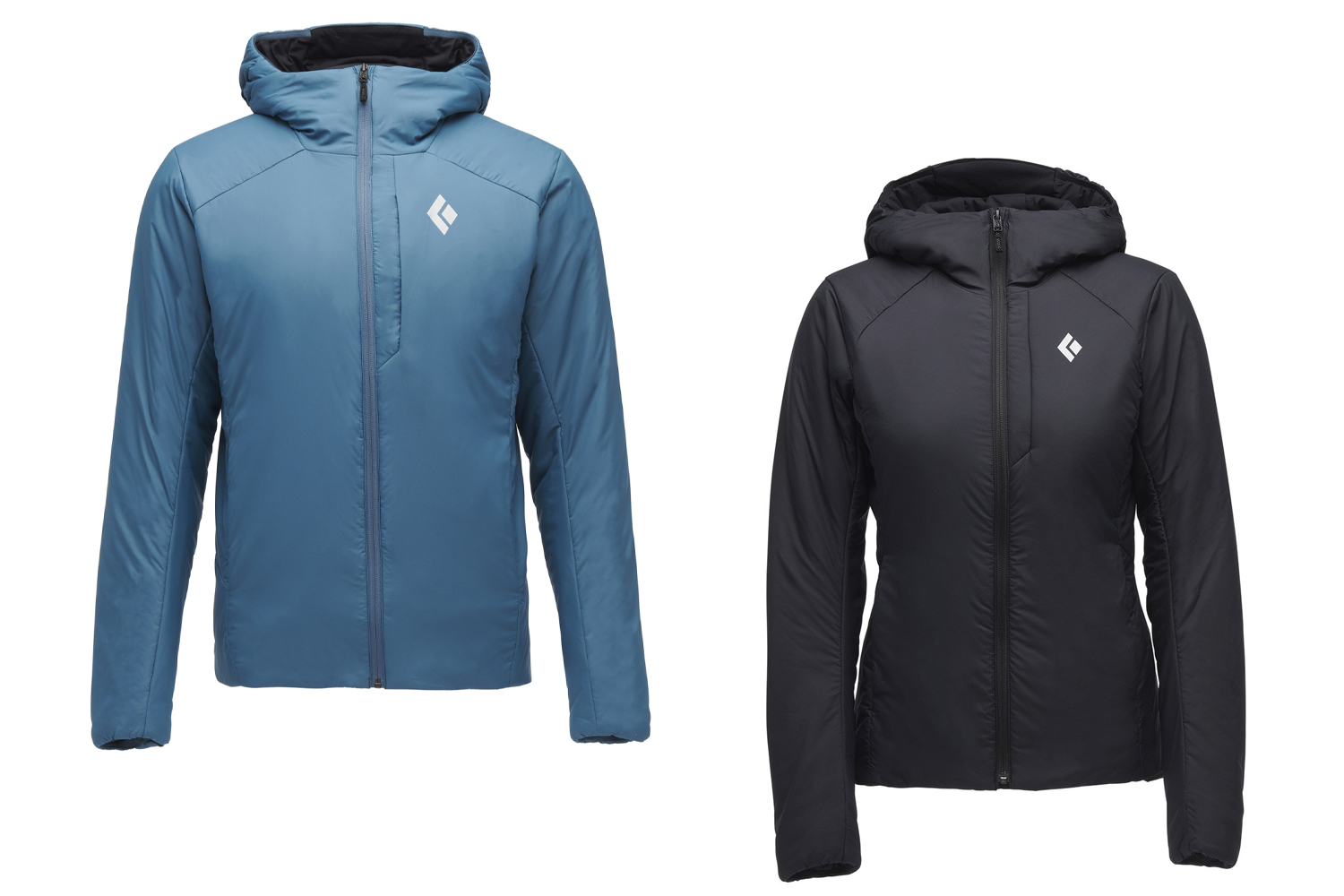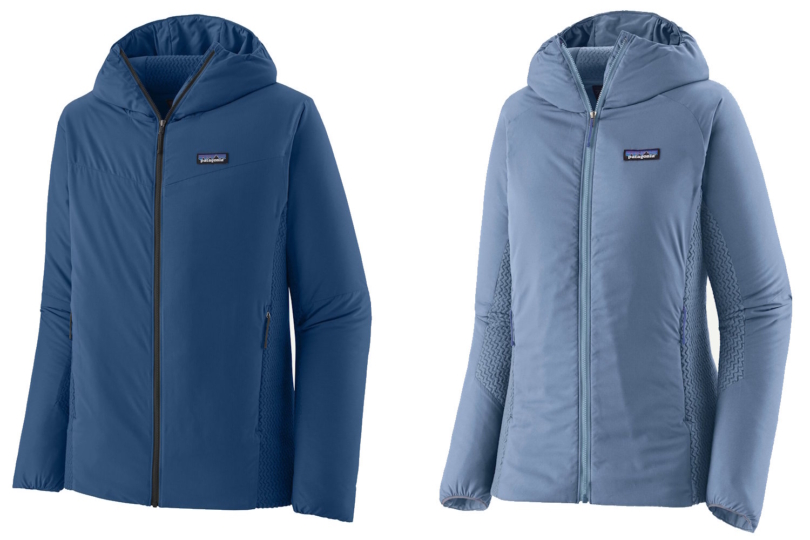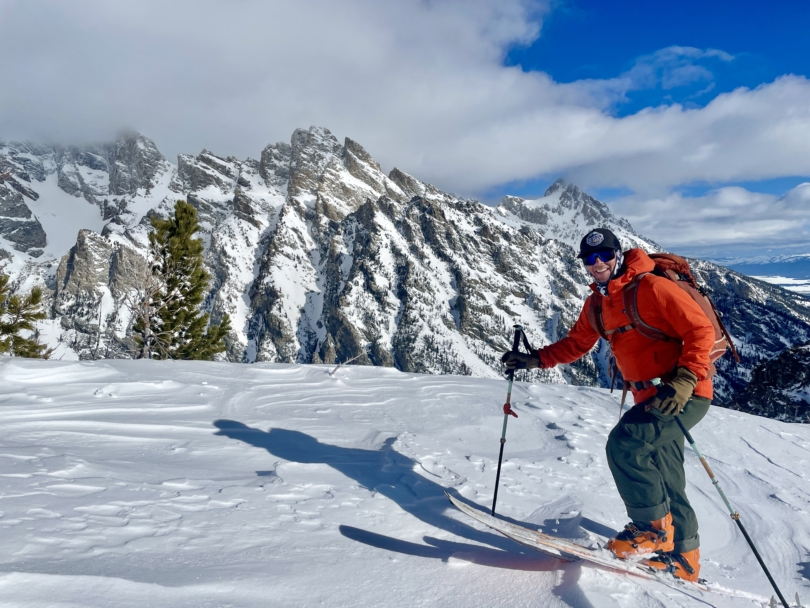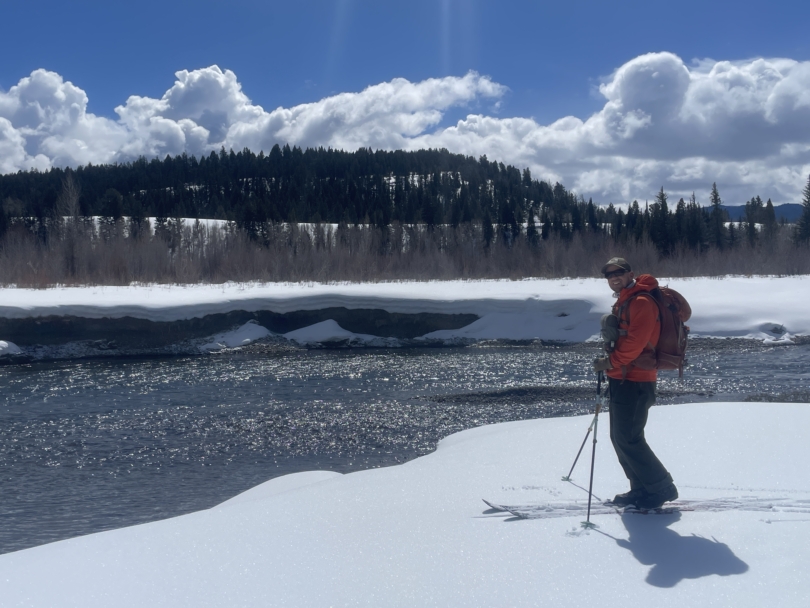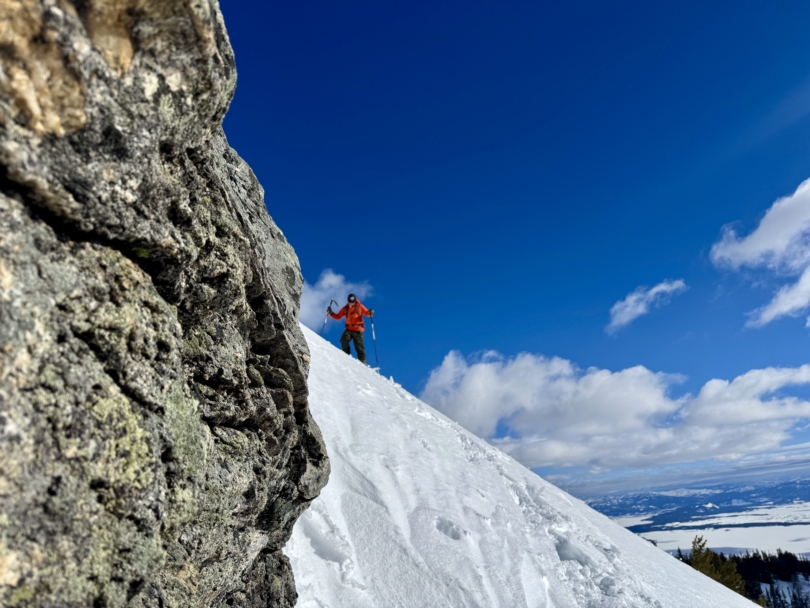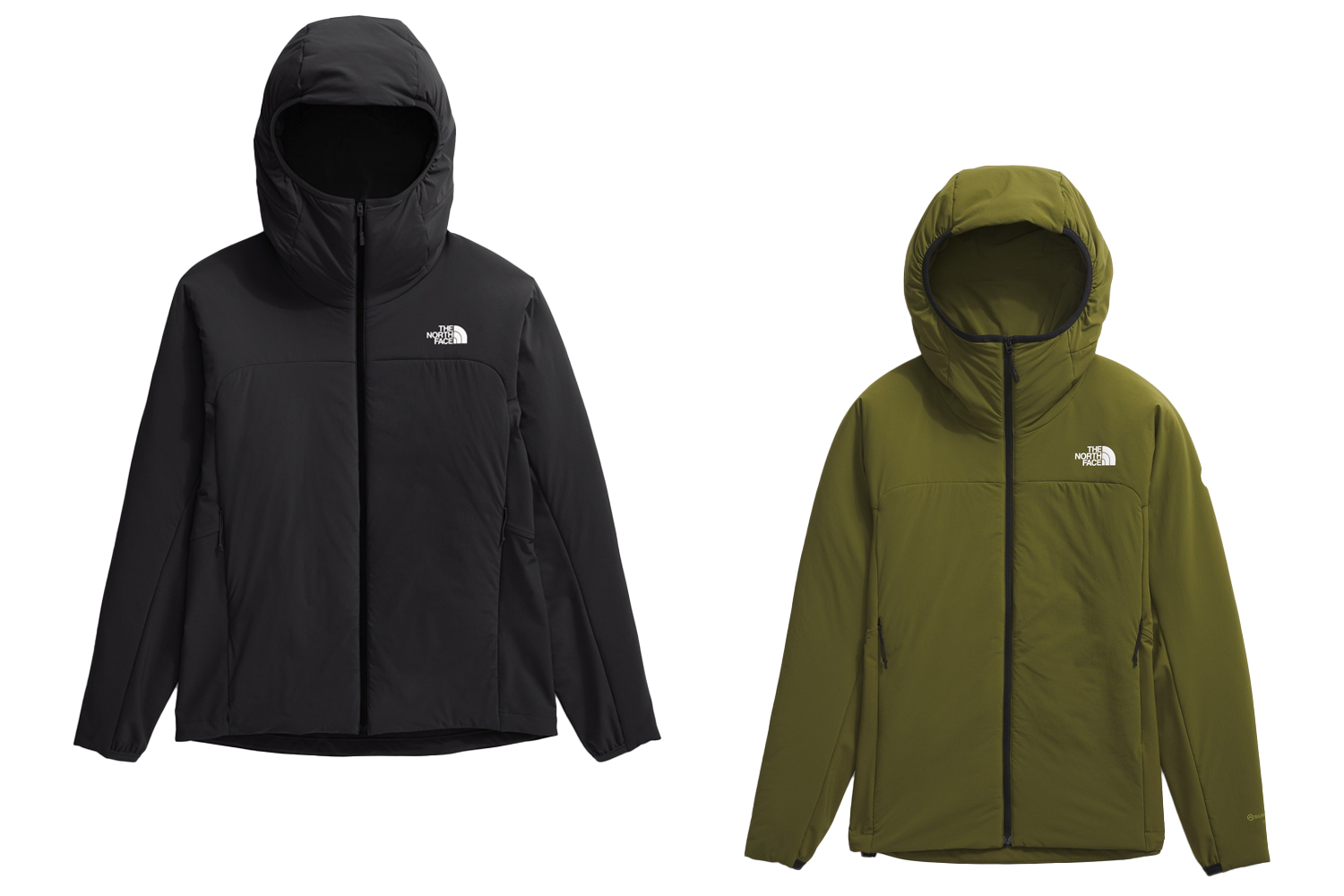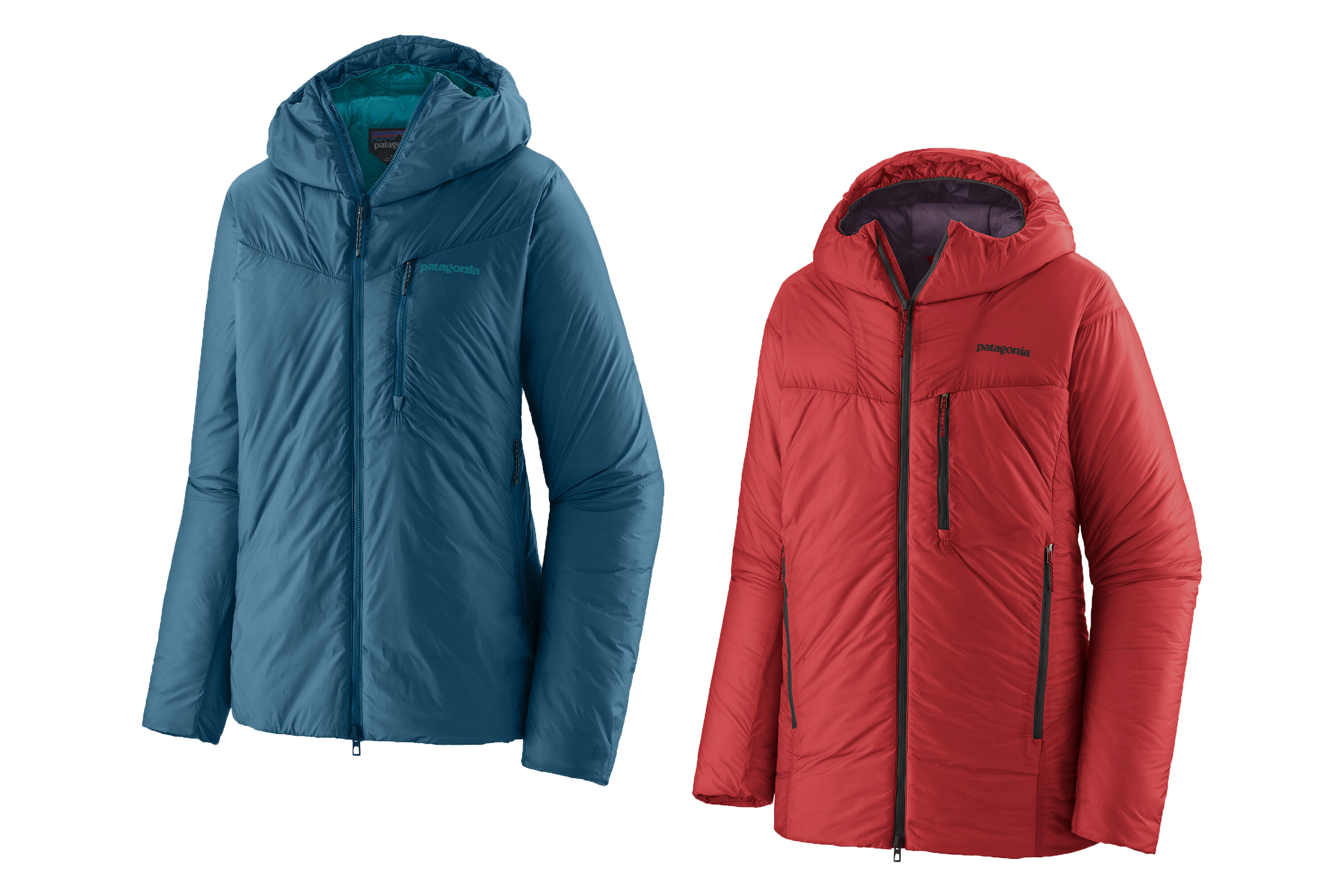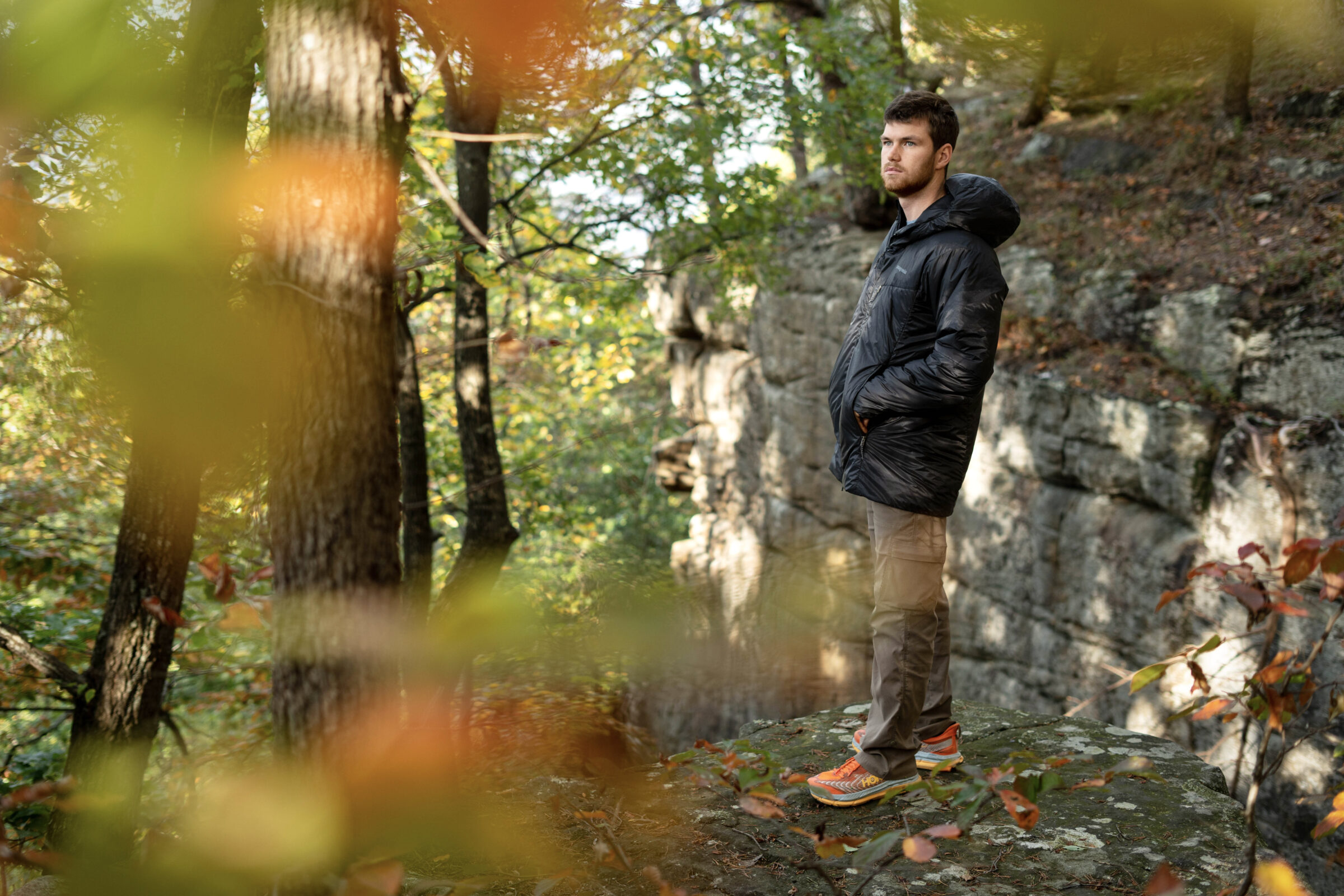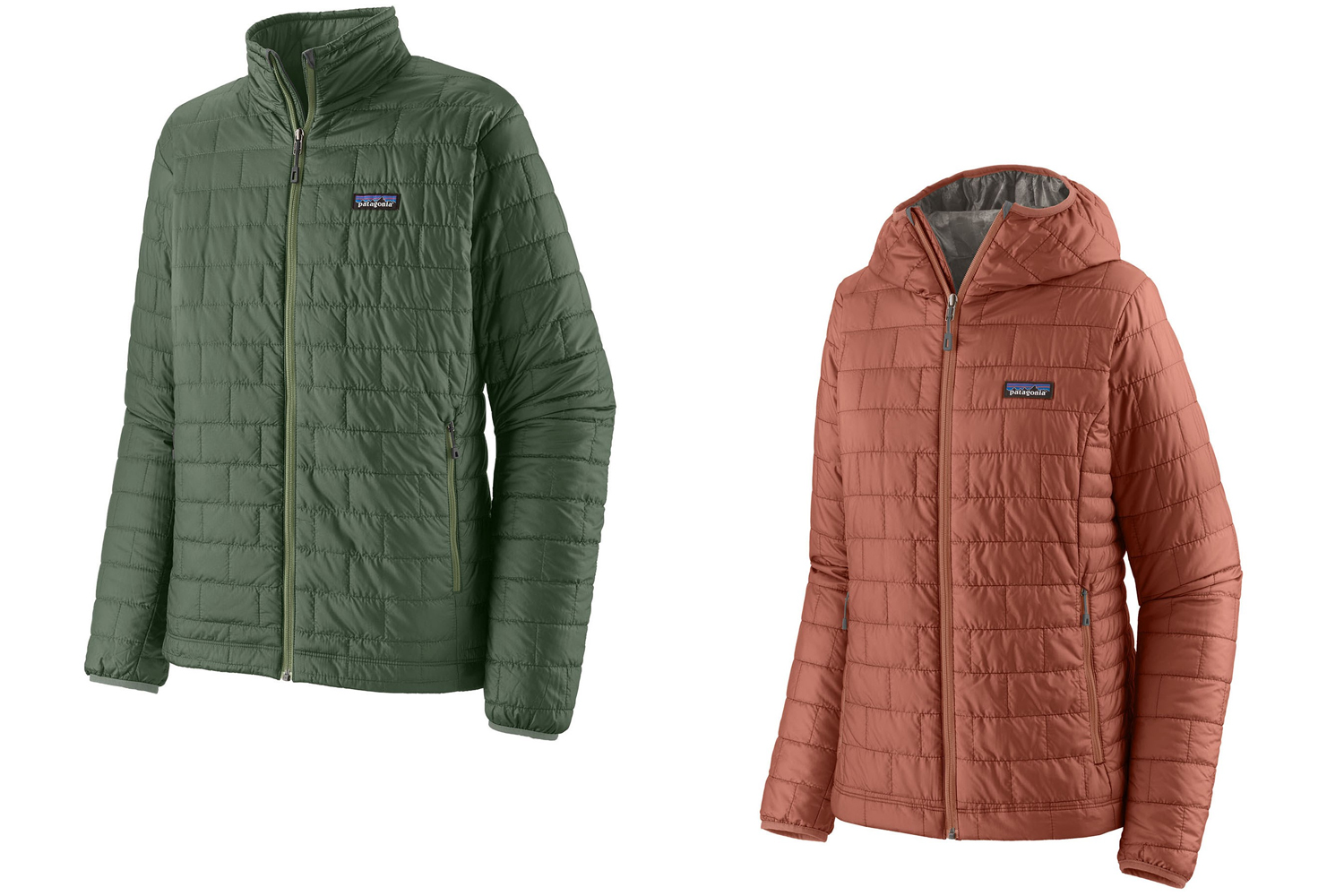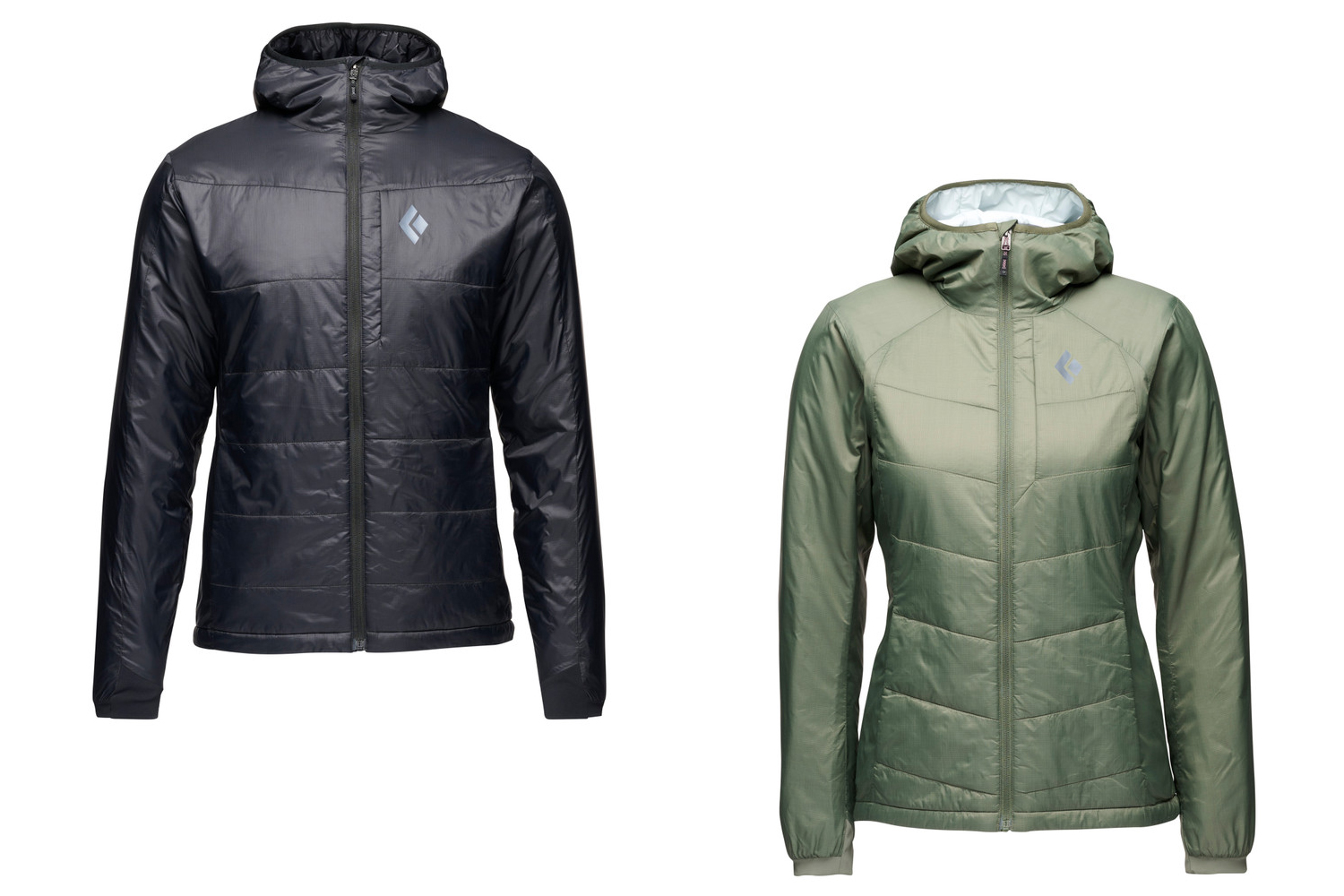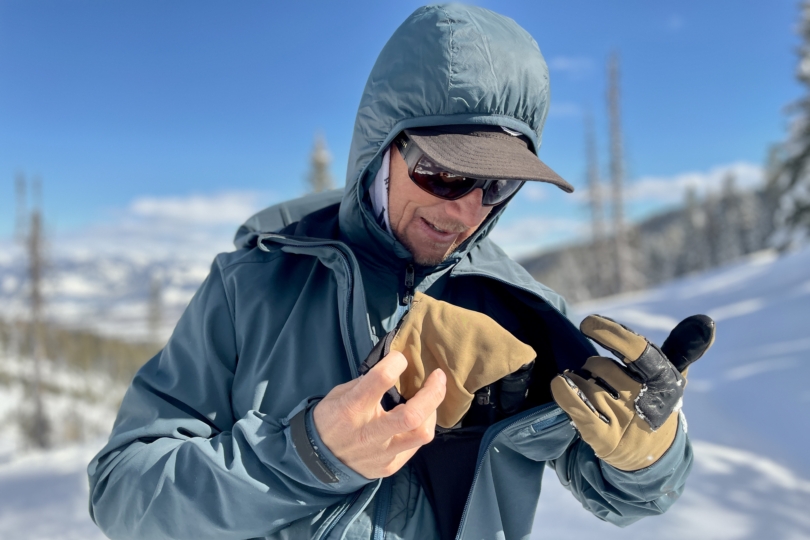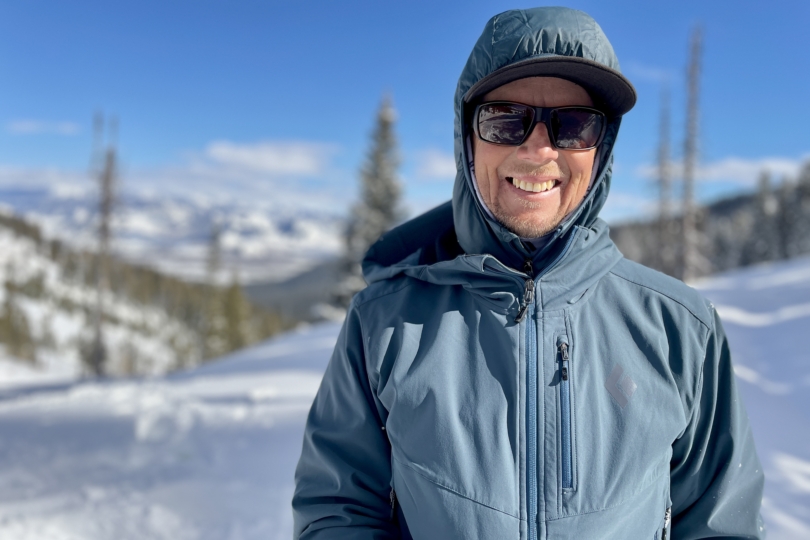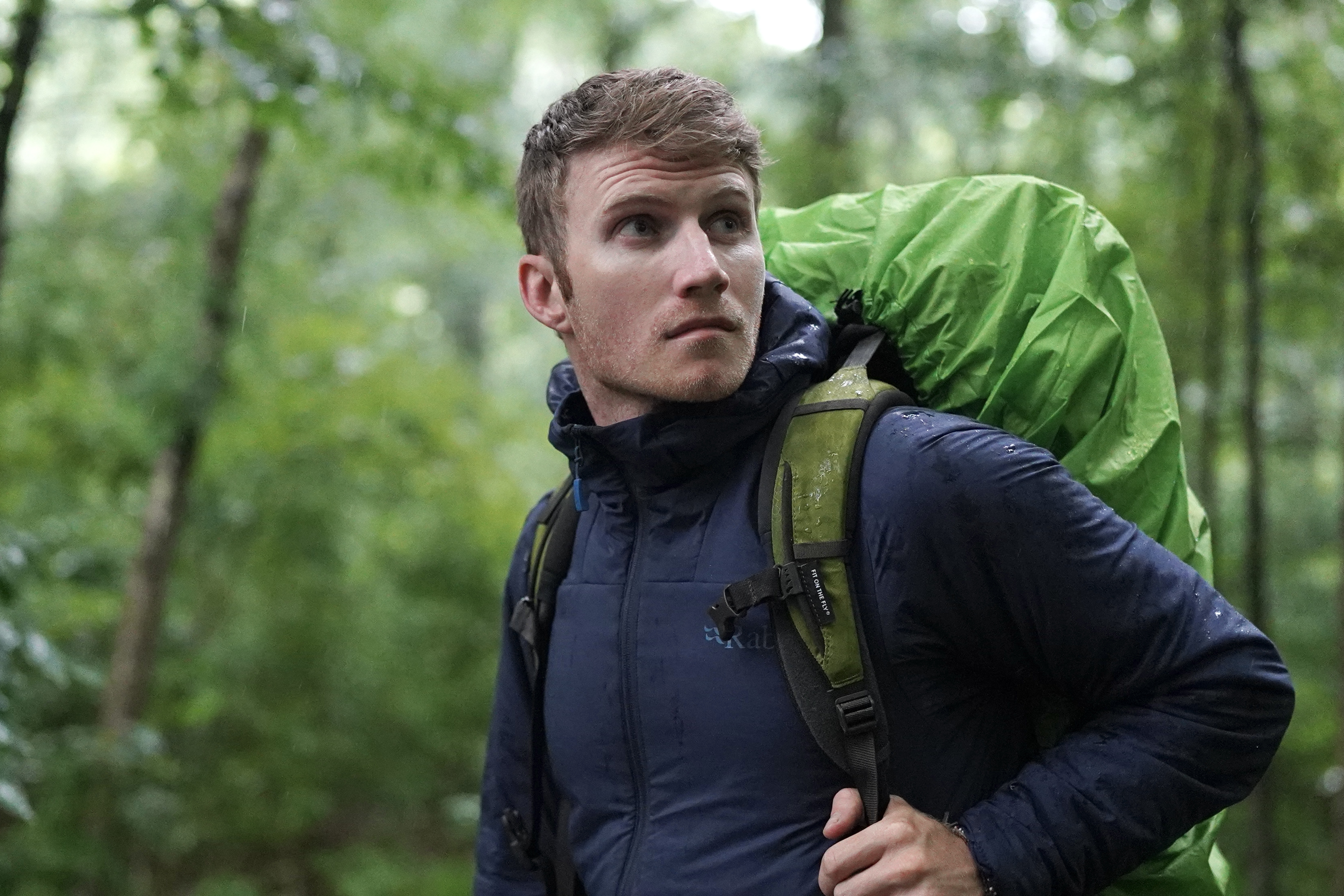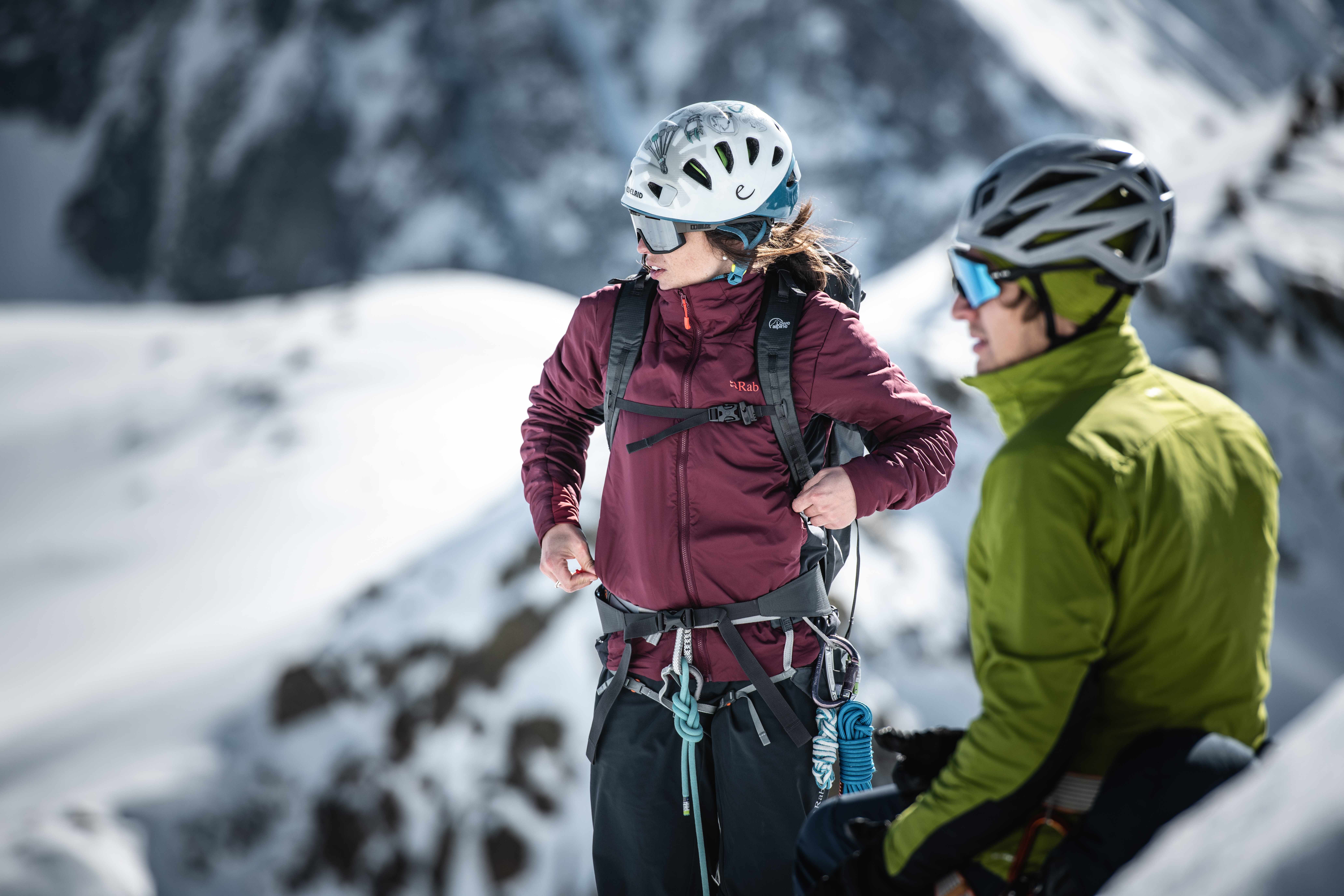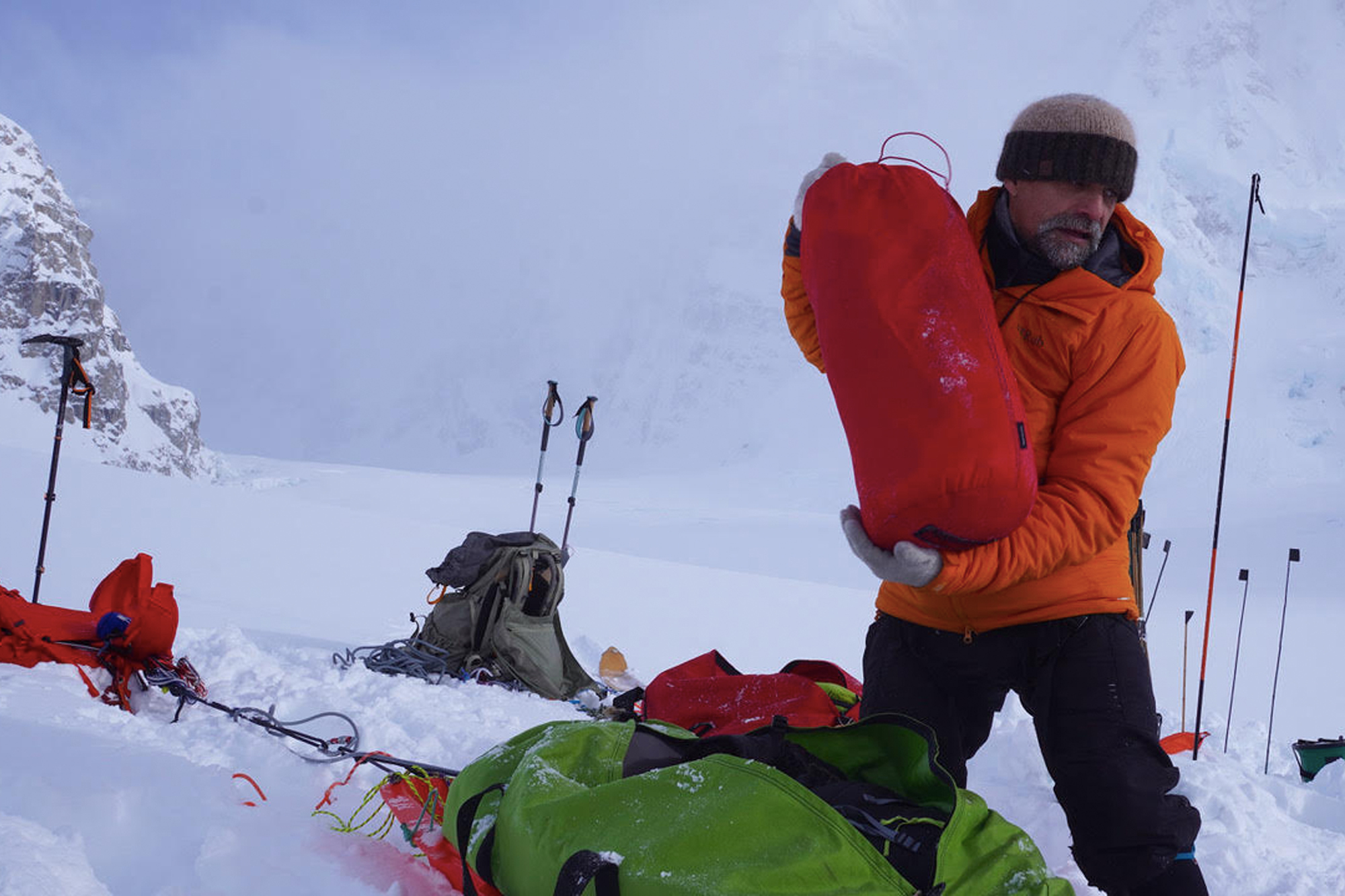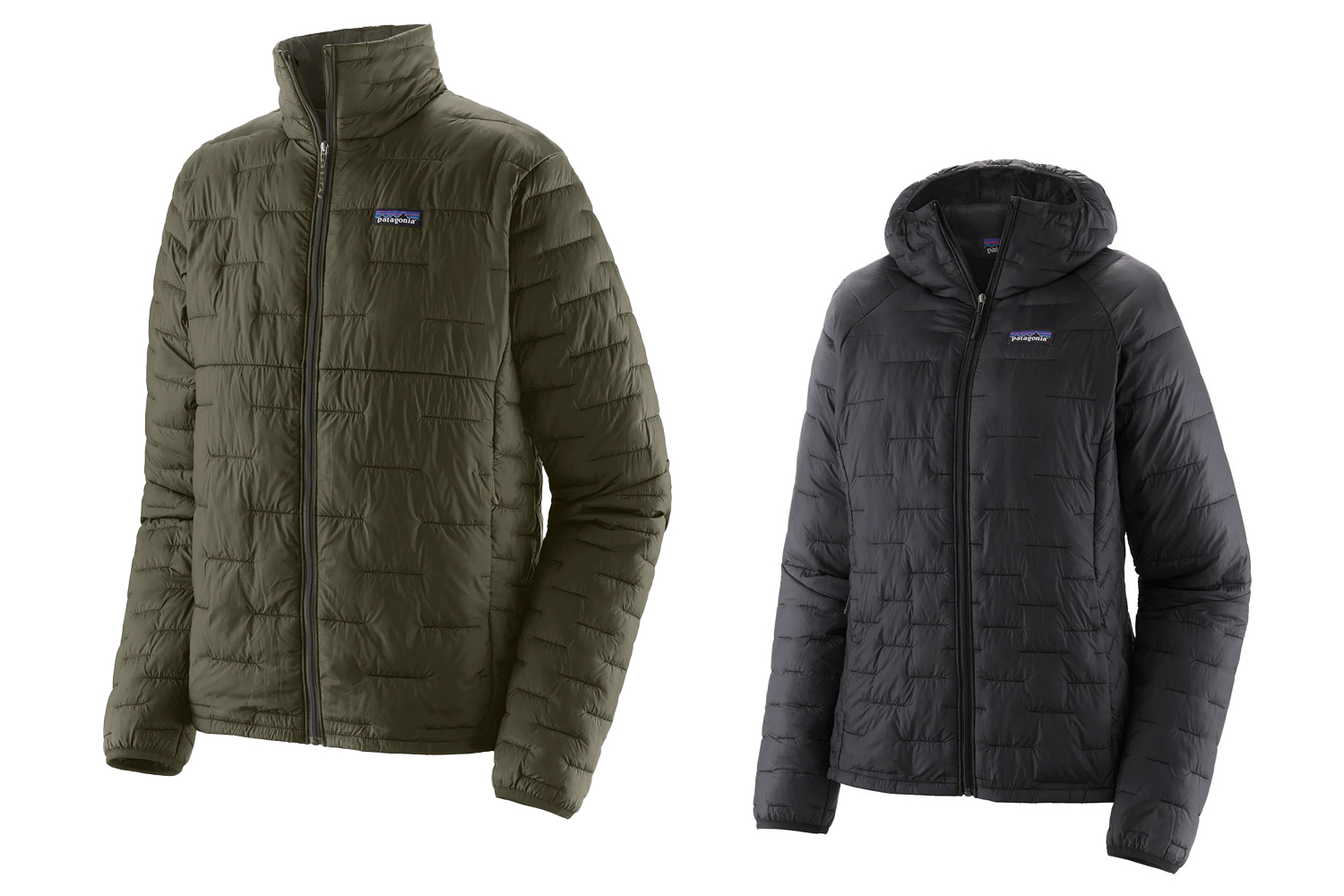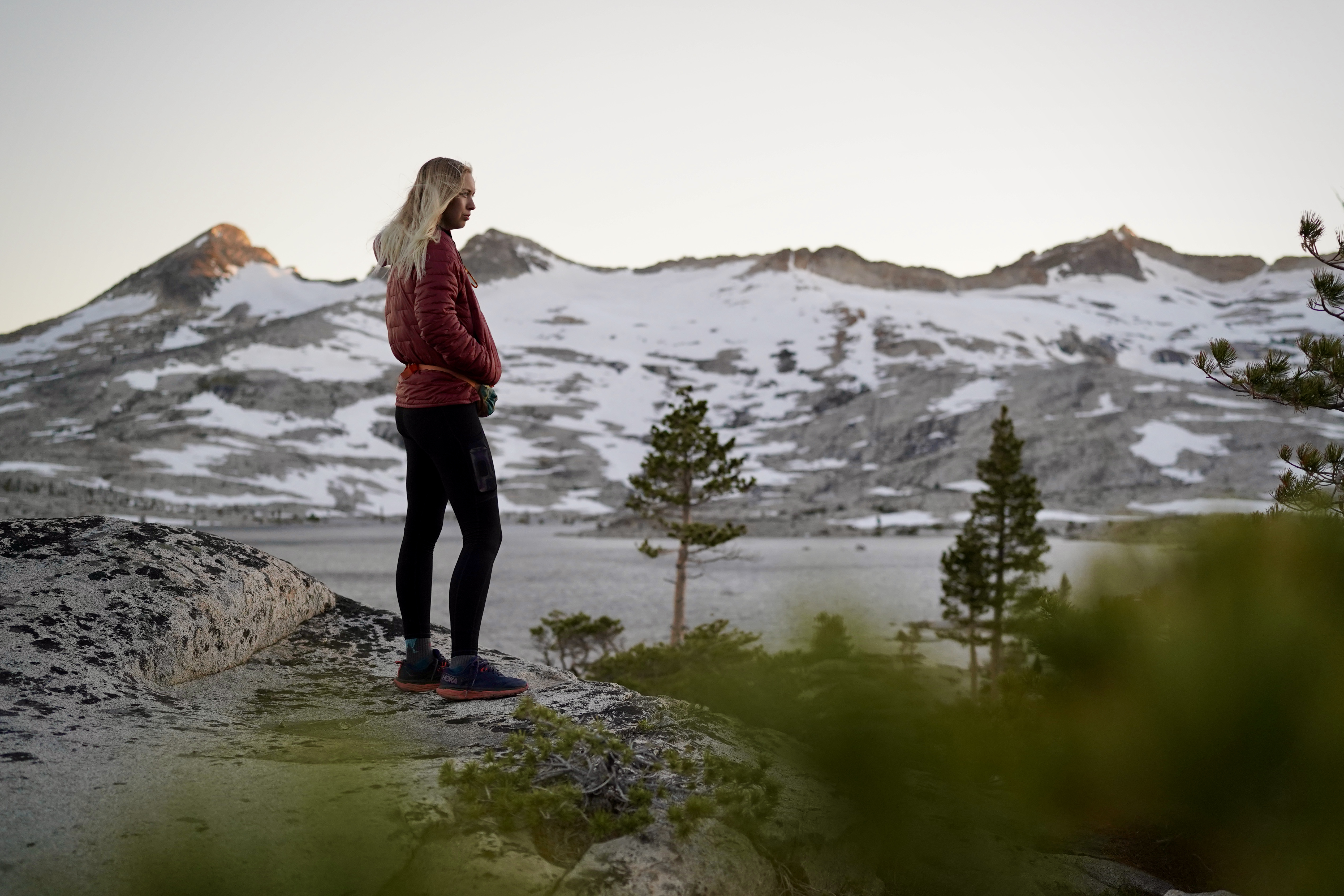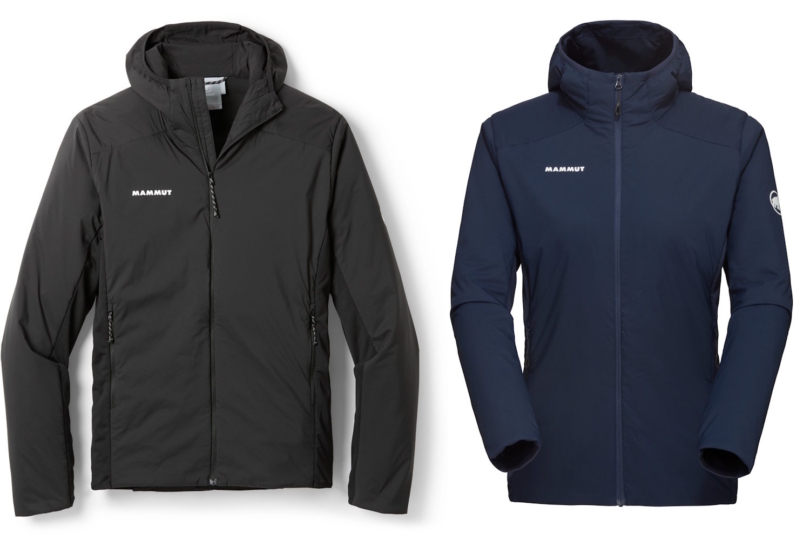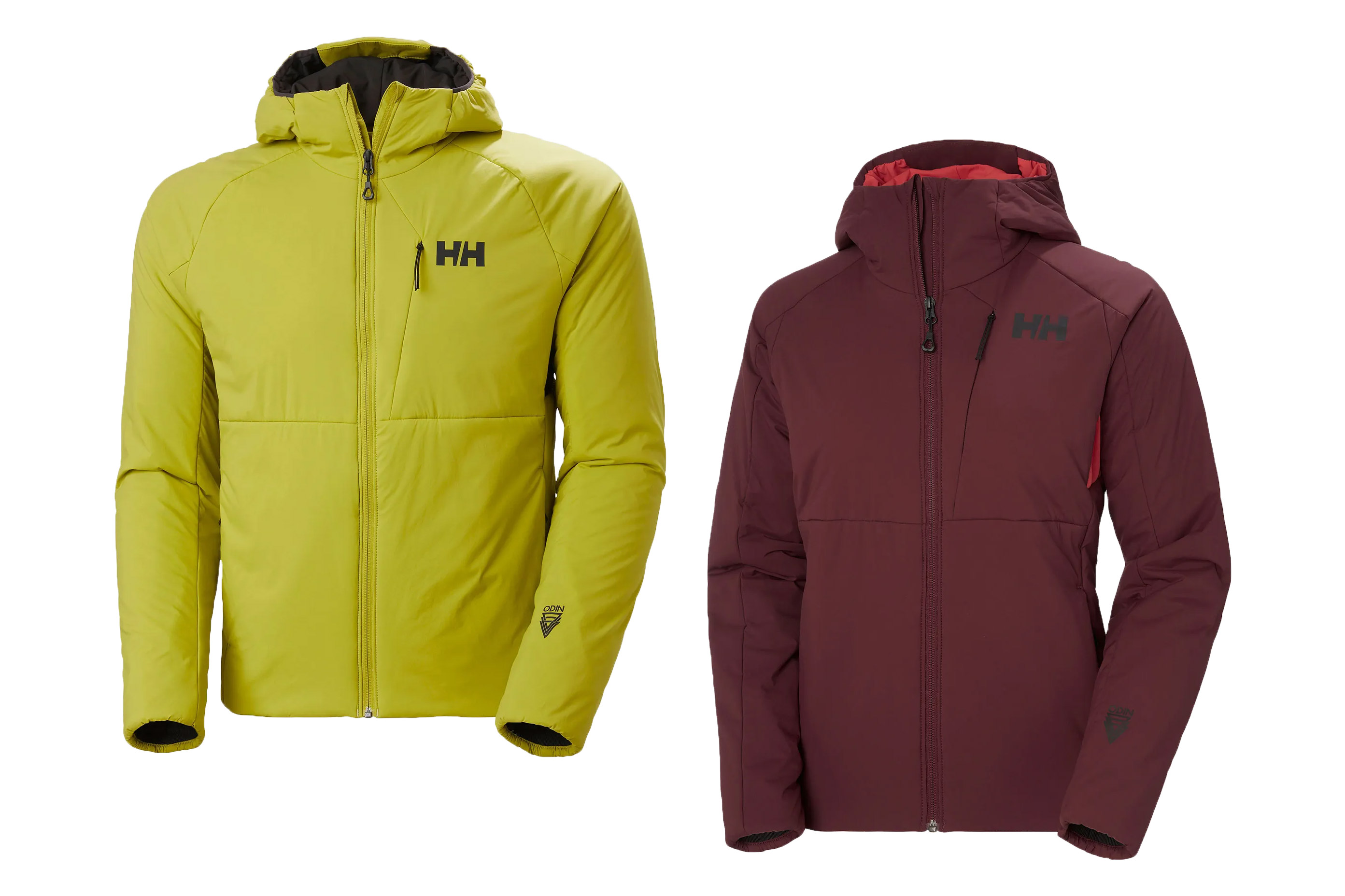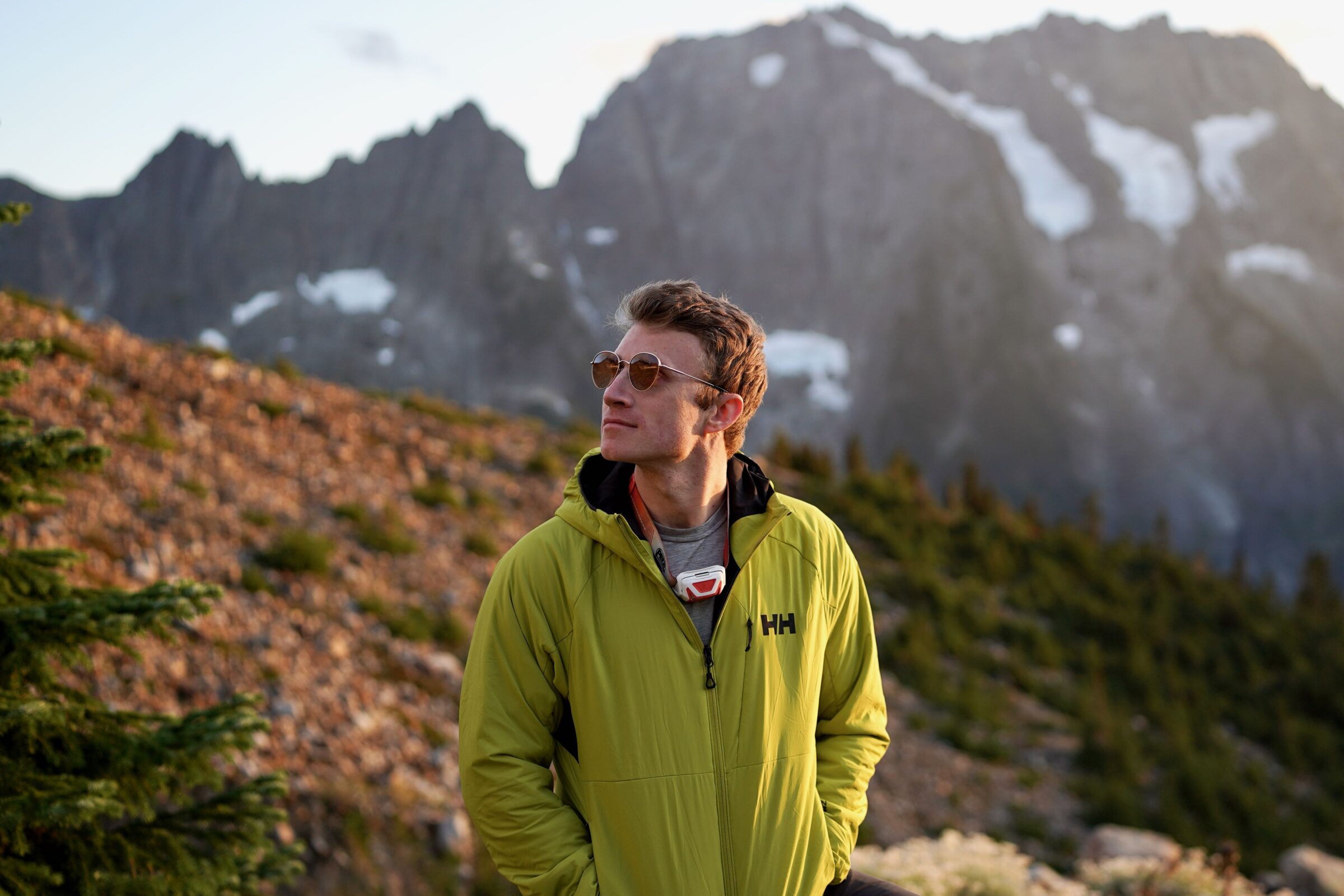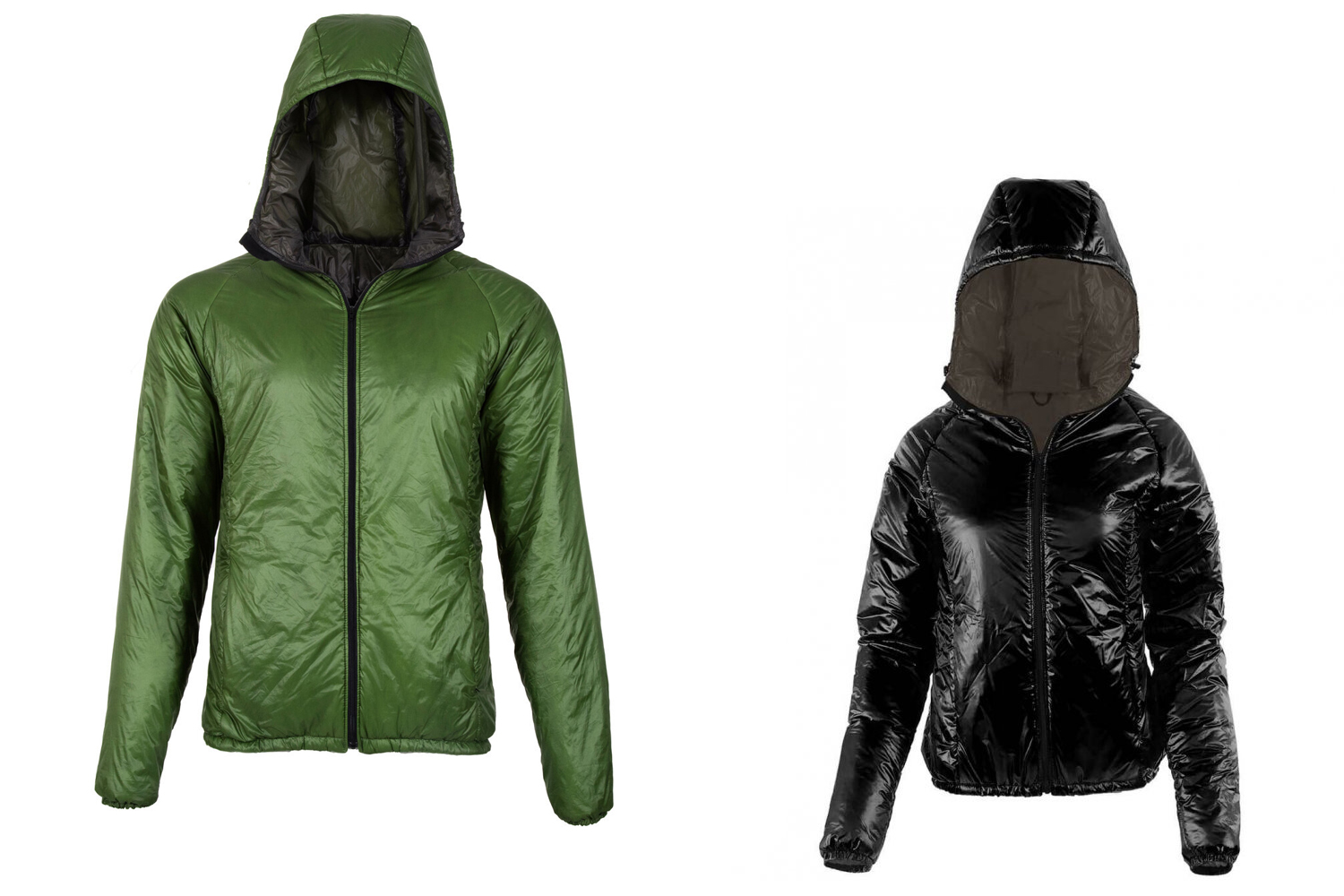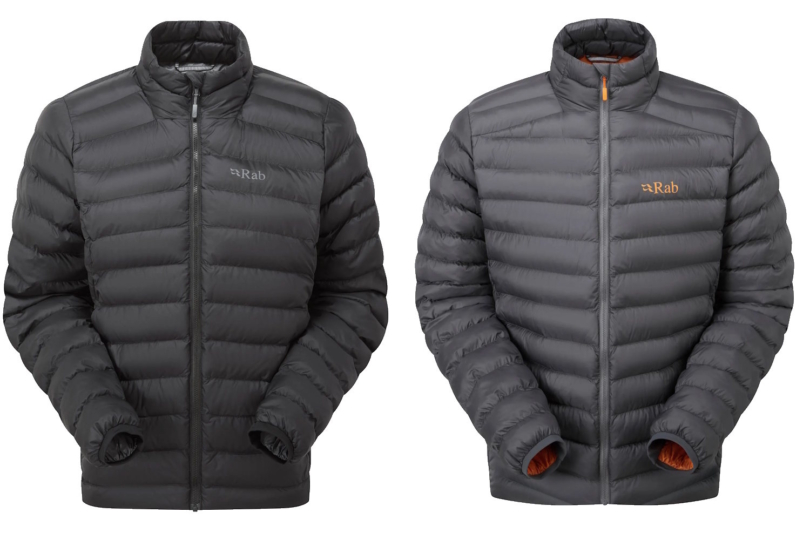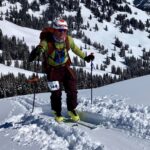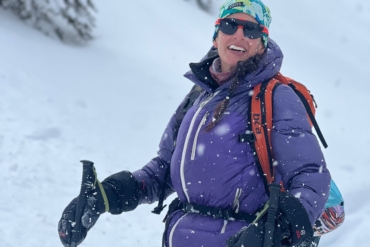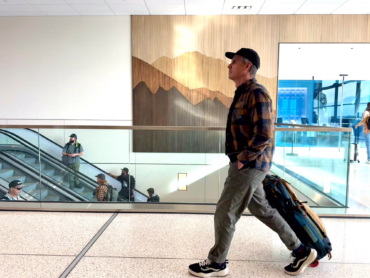The best synthetic jackets sidestep down’s biggest weakness: they stay warm and functional even when wet. While they don’t quite match down’s warmth-to-weight ratio, synthetic options are often more breathable, more affordable, and better suited for active pursuits like backcountry skiing, climbing, mountain biking, and hiking.
Our team has tested dozens of synthetic jackets over the last decade. In the past season alone, GearJunkie editor Chris Kassar and avid outdoorsman Ryan Kempfer put a wide range of models through demanding conditions.
We skinned up endless switchbacks, skied backcountry powder laps, climbed high alpine walls, logged trail miles on foot and bike, and ended more than a few days huddled around the campfire — all with these jackets on our backs. We evaluated every model for fit, comfort, durability, breathability, packability, and overall value to bring you the best synthetic insulated jackets available today.
Whether you’re seeking the top performance of our overall pick, the Arc’teryx Atom Hoody, or a budget-friendly jacket like the Cotopaxi Capa Hybrid Insulated Hooded Jacket, we have all the options you need.
Editor’s Note: We refreshed this guide on October 28, 2025, to add three new jackets: the Patagonia DAS Light Hoody, our top weather-resistant pick; the Patagonia Nano-Air Hybrid Light Hoody, a breathable active layer built for high-output days; and the Rab Cirrus Insulated Jacket, a budget-friendly option with dependable warmth. We also introduced detailed ratings to help compare performance across categories.
The Best Synthetic Insulated Jackets of 2025
Arc’teryx Atom Hoody
-
Breathability
8.3
-
Durability
9.0
-
Weather Resistance
9.5
-
Weight & Packability
8.0
- Insulation: Coreloft 60 (60 g/m²)
- Weight: 13.05 oz.
- Key features: 2 hand pockets with hidden zippers, zippered chest pocket, gusseted underarms for mobility
- Pockets: 3 (2 zippered handwarmer pockets, 1 internal zip pocket)
- Shell fabric: Tyono, 100% nylon 20 denier shell with DWR treatment
Pros
- Breathable but still warm
- Durable fabrics that move well during activity
- Stylish look with a great, comfortable fit
Cons
- Expensive
- No integrated stuff sack
Cotopaxi Capa Hybrid Insulated Hooded Jacket
-
Breathability
9.5
-
Durability
8.0
-
Weather Resistance
7.0
-
Weight & Packability
6.8
- Insulation: Recycled synthetic PrimaLoft Gold P.U.R.E. (40gsm)
- Weight: 24 oz.
- Key features: Colorful fun design, scuba hood for locking in warmth, knit side panels & sleeves for added mobility
- Pockets: 3 (2 zippered handwarmer pockets, 1 internal zip pocket)
- Shell fabric: 100% recycled 20D ripstop nylon with PFC-free DWR finish
Pros
- Solid warmth mixed with breathability
- Excellent fit & comfort
- Affordable
- Max mobility
Cons
- Not windproof
Patagonia DAS Light Hoody
-
Breathability
6.5
-
Durability
9.0
-
Weather Resistance
9.8
-
Weight & Packability
8.0
- Insulation: 65-g PlumaFill 100% recycled polyester
- Weight: 12.2 oz.
- Key features: Ultralight weather-resistant outer fabric, 2-way full zip, helmet-compatible hood
- Pockets: 4 (2 zippered handwarmer pockets, 1 internal drop-in pocket, 1 zippered external left-chest pocket)
- Shell fabric: 10-D Pertex® Quantum Pro 100% recycled nylon ripstop with DWR
Pros
- Lightweight and packable
- Warm for its weight
- Incredible weather resistance
- Versatile for a range of activities
Cons
- Not as breathable as lighter synthetics
- Too light for true winter belays
Outdoor Research SuperStrand LT Hoodie
-
Breathability
7.0
-
Durability
8.8
-
Weather Resistance
9.5
-
Weight & Packability
9.0
- Insulation: VerticalX SuperStrand Insulation
- Weight: 10.9 oz.
- Key features: 2 zippered hand pockets, left hand pocked doubles as stuff sack, 2 internal drop-in pockets, insulated hood, elastic cuffs, light and packable
- Pockets: 2 zippered handwarmer pockets, 2 internal drop
- Shell fabric: Bluesign-approved, 100% nylon 12D Rip Stop Shell
Pros
- Lightweight & packable
- Durable
- Warm for its weight
- Windproof & water-resistant
Cons
- Poor zipper quality
- Lacks breathability
Black Diamond First Light Stretch Hoody 2.0
-
Breathability
9.0
-
Durability
7.5
-
Weather Resistance
7.0
-
Weight & Packability
9.0
- Insulation: Migration-resistant PrimaLoft Gold Active Insulation
- Weight: 14.3 oz.
- Key features: Body-mapped insulation, underarm gussets for better range of motion, light and packable
- Pockets: 3
- Shell fabric: 20D nylon ripstop with PFC-free DWR coating
Pros
- Highly breathable
- Great for "start-stop" activities like climbing and backcountry skiing
- Phenomenal mobility for active use
Cons
- Some premature pilling
- Not the warmest out there
Patagonia Nano Air Hybrid Light Hoody
-
Breathability
9.5
-
Durability
7.5
-
Weather Resistance
6.5
-
Packability & Weight
9.8
- Insulation: 40-g FullRange® 100% recycled polyester
- Weight: 11.8 oz.
- Key features: R1® Air fleece panels on the upper and lower back, sides, and under the arms add ventilation
- Pockets: 2 handwarmer pockets with invisible zippers
- Shell fabric: 1.6-oz 30-denier 100% recycled polyester ripstop with DWR finish
Pros
- Breathable and stretchy
- Great for high-output activities
- Lightweight and comfortable
- Packs easily
Cons
- Not warm enough for static use
- Less weather protection than a full puffy
More Synthetic Favorites From the Field
-
Breathability
8.5
-
Durability
6.5
-
Weather Resistance
7.0
-
Weight & Packability
6.8
- Insulation: Ventrix/Polyester
- Weight: 14.8 oz.
- Key features: Helmet Compatible, Zipper Pockets
- Pockets: 3 (2 zippered hand pockets, 1 internal mesh pocket)
- Shell fabric: Nylon/Elastane with non-PFC DWR treatment
Pros
- Stylish
- Warm yet breathable
- Lightweight
Cons
- A bit fragile and prone to snags
- Not as technical as others
-
Breathability
6.0
-
Durability
8.5
-
Weather Resistance
9.8
-
Weight & Packability
5.5
- Insulation: 133 and 40g PrimaLoft Gold Insulation with aerogel technology
- Weight: 19.6 oz.
- Key features: Weather-resistant fabric, helmet-compatible hood, two-way front zipper for easy belaying and climbing
- Pockets: 5 (Two zippered handwarmer pockets, one zippered chest pocket, two deep internal dump pockets)
- Shell Fabric: 0.8 oz. 10 denier Pertex Quantum Pro recycled nylon with polyurethane dry coating and DWR finish
Pros
- Super warm
- Phenomenal weather and wind resistance
- Climbing-specific design
Cons
- Pretty heavy
- Bulky
- Expensive
-
Breathability
7.0
-
Durability
7.0
-
Weather Resistance
8.0
-
Weight & Packability
8.3
- Insulation: 60g PrimaLoft Gold Eco synthetic insulation
- Weight: 11.9 oz. (men’s medium)
- Key features: Comfortable front zipper garage at chin, elasticated cuffs, stuffs into its own chest pocket, drawcord-adjustable drop-tail hem
- Pockets: 3 (Two zippered handwarmer pockets and one internal chest pocket which doubles as a stuff sack with a harness attachment loop)
- Shell Fabric: 1.4 oz. 20-denier 100% recycled polyester ripstop with a DWR finish
Pros
- Stylish design looks good in the mountains and around town
- Highly compressible given how warm it is
- Slippery fabric makes layering easy
Cons
- Extensive stitching adds some breathability but also allows rain to soak insulation faster
- A little heavier than similar lightweight layers
- Loose-fitting cuffs often let some heat escape
-
Breathability
8.5
-
Durability
8.0
-
Weather Resistance
8.0
-
Weight & Packability
7.5
- Insulation: 60g PrimaLoft Gold Eco
- Weight: 12.8 oz.
- Key feature: Helmet compatible, zipper pockets
- Pockets: 3 (2 zippered hand pockets, 1 zippered chest pocket)
- Shell fabric: Micro ripstop nylon with with DWR finish
Pros
- Functional
- Warm yet breathable
- Very lightweight
Cons
- Stitching is delicate
- A bit pricey
-
Breathability
8.0
-
Durability
7.0
-
Weather Resistance
6.0
-
Weight & Packability
8.0
- Insulation: 60gsm PrimaLoft Gold Insulation Active+ through front, back, top of sleeves, and collar; 40gsm PrimaLoft Gold Insulation Active+ through sides, underarms, spine, and top of hood
- Weight: 10.3 oz. (men’s medium)
- Key features: Under helmet hood, elasticated gusset at cuffs, stuffs into its own chest pocket, body-mapped insulation to aid in breathability
- Pockets: 3 (Two concealed zippered handwarmer pockets and one internal chest pocket which doubles as a stuff sack with a harness attachment loop)
- Shell fabric: 20 denier Pertex Quantum Air nylon with a DWR finish
Pros
- Super breathable
- Lightweight
- Durable
- Packs down small
Cons
- Hood design makes wearing it under a helmet a little awkward
- Not the warmest jacket out there
-
Breathability
7.9
-
Durability
5.5
-
Weather Resistance
8.0
-
Weight & Packability
8.0
- Insulation: PlumaFill
- Weight: 10 oz. (men’s medium)
- Key features: Helmet-compatible hood, elasticized cuffs, stuffs into its own pocket, plentiful zippered and drop-in pockets
- Pockets: 4 (two welted, zippered handwarmer pockets and two internal drop-in pockets; left pocket doubles as a stuff sack with a reinforced carabiner clip-in loop)
- Shell fabric: 10-denier Pertex Quantum 100% nylon ripstop with a DWR finish
Pros
- Lightweight
- Quite wind-resistant for its weight
- Versatile
Cons
- Expensive compared to similar options
- Minimal stretch
- Shell could tear easily
-
Breathability
6.5
-
Durability
7.0
-
Weather Resistance
7.3
-
Weight & Packability
5.0
- Insulation: 60g Toray stretch insulation
- Weight: 12.8 oz.
- Key features: Zippered front pockets are compatible with pack straps and climbing harnesses, elastic cuffs, adjustable hem
- Pockets: 2
- Shell fabric: 20-denier Pertex Quantum Air
Pros
- Very warm for an active midlayer
- Thoughtful features
Cons
- A bit bulky
-
Breathability
7.5
-
Durability
7.5
-
Weather Resistance
7.0
-
Weight & Packability
6.0
- Insulation: PrimaLoft Gold Active+
- Weight: 1 lb.
- Key features: 2-way stretch fabric, DWR coating, flat brim hood
- Pockets: 3 (Two zippered handwarmer pockets and one internal chest pocket)
- Shell fabric: 100% Polyamide (shell 1); 95% Polyester, 5% Elastane (shell 2) with a DWR coating
Pros
- Breathable but durable face fabric and insulation
- Stellar mobility while climbing or hiking with articulated elbows
- Vented underarms
- Extremely comfortable lining fabric
Cons
- On the heavy side
- Niche, performance-oriented design isn't for everyone
-
Breathability
8.0
-
Durability
5.0
-
Weather Resistance
6.0
-
Weight & Packability
8.0
- Insulation: 2 oz/yd² CLIMASHIELD APEX insulation
- Weight: 8.2 oz. (size medium, 7-denier inside and outside fabric, standard torso, standard hood)
- Key features: Zippered handwarmer pockets, no sewn-through seams, shock cord adjustment at the hem, and elastic cuffs
- Pockets: 2 (Two zippered handwarmer pockets)
- Shell Fabric: 7, 10, or 20 denier options for both inside and outside fabric
Pros
- Fully customizable
- Phenomenal warmth-to-weight ratio
- Packable
Cons
- Long lead times for custom orders
- Fabric not super durable
- Boxy, unflattering look
-
Breathability
6.0
-
Durability
7.5
-
Weather Resistance
7.0
-
Packability & Weight
6.0
- Insulation: PrimaLoft® Silver RISE 100% recycled synthetic insulation
- Weight: 16.6 oz
- Key features: Integrated storage sack, elastic cuffs, extra warmth
- Pockets: 3 (2 zipped hand pockets, 1 inner security chest pocket)
- Shell fabric: 20D Recycled Pertex® Quantum outer with fluorocarbon free DWR
Pros
- Affordable
- Durable
- Comfortable feel & fit
- Made with recycled materials
Cons
- Heavy
- Bulkier and less packable than many others
- No hood
Synthetic Insulated Jacket Comparison Chart
| Synthetic Jacket | Price | Insulation | Weight | Pockets | Shell Fabric |
| Arc’teryx Atom Hoody | $300 | Coreloft 60 | 13.2 oz. | 3 | Tyono, 100% nylon shell with DWR |
| Cotopaxi Capa Hybrid Insulated Hooded Jacket | $180 | Recycled synthetic PrimaLoft® Gold P.U.R.E. (40gsm) | 24 oz. | 3 | 100% recycled 20D ripstop nylon with PFC-free DWR finish |
| Outdoor Research SuperStrand LT Hoody | $235 | VerticalX™ SuperStrand Insulation | 10.9 oz. | 4 | bluesign® approved, 100% Nylon 12D Rip Stop Shell |
| Black Diamond First Light Stretch Hoody | $349 | Migration-resistant PrimaLoft Gold Active | 14.3 oz. | 3 | 20D nylon ripstop with PFC-free DWR |
| Patagonia Nano Air Hybrid Light Hoody | $299 | 40-g FullRange® 100% recycled polyester | 11.8 oz. | 2 handwarmer pockets with invisible zippers | 1.6-oz 30-denier 100% recycled polyester ripstop with DWR finish |
| TNF Casaval Hybrid Hoodie | $260 | Ventrix/Polyester | 14.8 oz. | 3 | Nylon/Elastane with non-PFC DWR treatment |
| Patagonia DAS Parka | $449 | PrimaLoft Gold with Aerogel | 19.6 oz. | 5 | Pertex Quantum Pro with DWR |
| Patagonia Nano Puff | $239 | 60g PrimaLoft Gold Eco | 11.9 oz. | 3 | 100% recycled polyester ripstop with DWR |
| Black Diamond Solution Hoody | $299 | 60g PrimaLoft Gold Eco | 12.8 oz. | 3 | Micro ripstop nylon with DWR finish |
| Rab Xenair Alpine Light Jacket | $225 | PrimaLoft Gold Active+ | 10.3 oz. | 3 | Pertex Quantum Air with DWR |
| Patagonia Micro Puff Hoodie | $329 | PlumaFill | 10.0 oz. | 4 | Pertex Quantum with DWR |
| Mammut Rime Light IN Flex | $249 | 60g Toray stretch | 12.8 oz. | 2 | 20-denier Pertex Quantum Air |
| Helly Hansen Odin Stretch Hood Insulator 2.0 | $260 | PrimaLoft Gold Active+ | 16.0 oz. | 3 | 100% Polyamide with DWR |
| Enlightened Equipment Torrid Jacket | $200 | CLIMASHIELD APEX | 8.2 oz. | 2 | 7, 10, or 20 denier options |
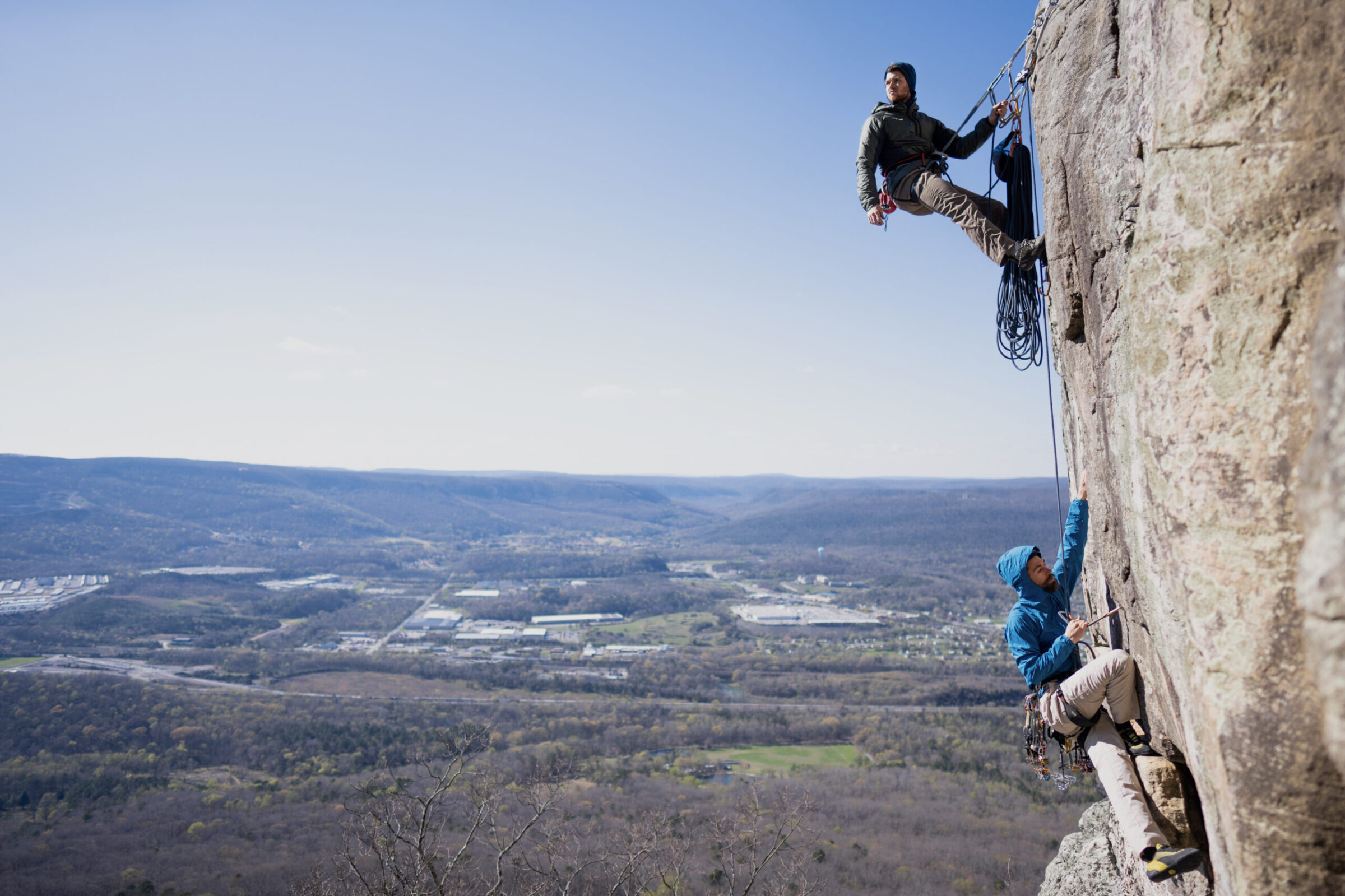
How We Tested Synthetic Insulated Jackets
Our Testing Grounds & Process
The GearJunkie team has been huddling together in shiver bivies, tugging on tiny granite crimps, and slogging along skin tracks in synthetic jackets for just about forever. When we say we’ve exhaustively sampled the market’s selection — we mean it.
We’ve tested these jackets in everything from the mountains of Alaska to the long trails of the Lower 48 to the domes of Yosemite. No stone was left unturned in the creation of this roundup, and each jacket had to pass a series of demanding tests to merit any real estate in this guide.

Our Expert Testers
This guide is the product of decades of collective testing and experience. Our team of climbers, hikers, bike packers, skiers, and long-distance trekkers has lived in synthetic puffy jackets through every kind of weather and terrain, from granite walls to snowy ridgelines and dusty backroads.
Author Chris Carter took over this guide in August 2022. As an ultralight thru-hiker and endurance backpacker, he’s hiked the Triple Crown of long trails (the Appalachian Trail, Pacific Crest Trail, and Continental Divide Trail) and continues to pursue long-distance hiking around the world — experience that shapes his keen eye for functionality, weight, and real-world performance.
In 2024, Ryan Kempfer and GearJunkie Editor Chris Kassar took over testing and writing for this guide. They’re both skiers, climbers, hikers, and outdoor enthusiasts who prefer adventuring in the cold and know what makes a synthetic jacket excel in demanding conditions. Because the competition for the synthetic podium is fierce and constantly evolving, we keep this guide on a regular update schedule. As soon as fresh technology or new designs hit the market, we’re scoping them out, testing them in the wild, and deciding whether they deserve attention.
Rest assured, every jacket in this guide has been vetted by our stone-cold pros and has proven to be worthy. If you’re in the market for other layering options, check out our guides to the best down jackets, best windbreaker jackets, best fleece jackets, and the best midlayers. If you’re looking for an all-in-one layer for more static activities, check out our guide to the best winter jackets.

Our Rating System for Synthetic Insulated Jackets
We scored each jacket on a 1–10 scale across four key categories that reflect the traits that matter most when choosing a synthetic insulated jacket.
Breathability refers to how well a jacket vents heat and moisture during high-output activity — higher scores mean better airflow and less clamminess. Durability reflects how tough the fabrics, zippers, and stitching proved over repeated testing with packs, climbing gear, and daily wear. Weather resistance measures how well a jacket sheds wind, snow, and light rain, factoring in fabric strength, DWR finish, and overall protection. Packability and weight capture the balance of warmth-to-weight ratio and compressibility, with high scores signaling solid warmth in a small, lightweight package.
The overall score isn’t a simple average of these numbers but our editorial judgment of the full user experience, giving you a clear sense of how each jacket truly stacks up.
Buyer’s Guide: How to Choose a Synthetic Insulated Jacket
Synthetic insulation has become a popular alternative to down over the years, and the market now offers a wide range of high-quality synthetic-filled jackets. On this list, some of our recommendations highlight puffy jackets that prioritize warmth, while others are best used during high-output activities like running or skiing, where breathability is key.
Synthetic midlayers that focus on warmth stress thermal efficiency for lower-output activities such as walking, belaying, fishing, and so on. Puffy synthetic midlayer jackets prioritize maximum warmth over breathability.
On the other hand, active insulation jackets offer more breathability for high-output pursuits such as backcountry skiing, jogging, and climbing. Synthetic jackets designed for active use are more breathable and better at regulating temperature.
Beyond these two broad categories, there are many other factors to consider as you narrow down your synthetic jacket search. In this buyer’s guide, we aim to prepare you to make an informed and confident purchase.
What Is Synthetic Insulation?
Synthetic insulation is designed to replicate the qualities of down. It’s made from polyester fibers arranged into intertwined filaments that trap warm air in millions of tiny pockets.
Compared to down jackets, synthetic insulated jackets have both pros and cons. Importantly, synthetic insulation is able to retain its warmth when wet. This is a huge advantage over down and a key reason why synthetic insulation is often preferred in wet and cold environments.

Unfortunately, synthetic insulation cannot quite match the miraculous warmth-to-weight ratio of down. In other words, synthetic jackets need to be a little heavier to achieve the same level of warmth. However, there are some super-light options, including our top pick of the category, the Outdoor Research SuperStrand LT Hoody.
There are many different types of synthetic insulation on the market now, and various companies have their own proprietary types of insulation that they either fill their own jackets with or sell to other companies. A few of the most common types of insulation are PrimaLoft, Thinsulate, and PlumaFill.
PrimaLoft, one of the most widely used types of synthetic insulation, is made with 100% polyester microfiber that mimics the fluffiness of natural down, and comes in a few different categories. The most popular are PrimaLoft Gold, PrimaLoft Silver, and PrimaLoft Silver Eco (which is made of 70% recycled fibers).
PrimaLoft Gold is the most performative and sought-after insulation in their lineup, and is comparable to a 550-fill power down jacket. Each of the categories, to varying degrees, is highly breathable, water-resistant, and compressible.

Thinsulate insulation is considered to be one of the warmest thin apparel insulations on the market. Its incredibly thin fibers retain a surprising amount of warmth, and the nature of its tight construction makes it a prime material for ultralight insulating layers, or small clothing items such as gloves.
Though every type of synthetic material will lose at least some of its insulating properties when wet, Thinsulate boasts excellent moisture-wicking abilities, allowing it to dry quickly. Other types of fill, such as Polartec Alpha and FullRange insulation (used by Patagonia in the Nano-Air series of jackets), offer arguably the most breathable options out there.
Polartec Alpha, or Alpha Direct, was manufactured out of a military request to develop a synthetic and incredibly breathable alternative to down that could be used in high-intensity activities. The insulation eventually found its way into the outdoor industry and is used by many different brands today.
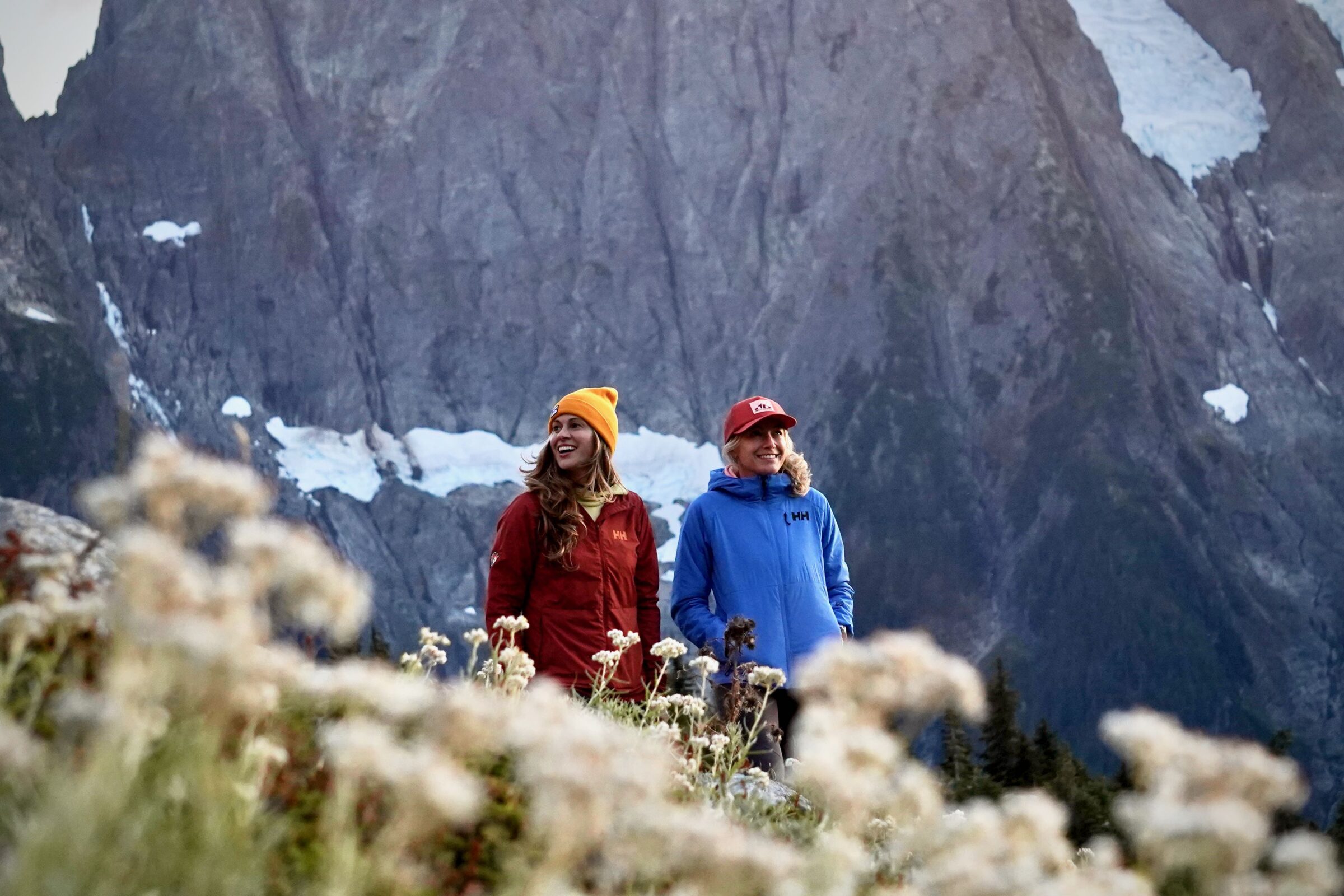
Intended Use
Take a few moments to envision how you’ll use your insulated jackets. Do you need something for winter climbing or long-distance backpacking? Or will this be a jacket that does it all? There’s no right or wrong answer. But being clear about your intended use will help you prioritize certain factors such as breathability and durability.
In each of the product reviews above, we have highlighted a variety of different features that the jackets are known for, in addition to ways they could be improved. Take a look at both the pros and cons of the layers, and focus on what activity you will be using it for most.
If you are setting out on a 5-month thru-hike of the Pacific Crest Trail, you will need an insulated jacket that keeps you protected and warm in a vast range of ecosystems and climates.
If you want a layer that keeps you cozy while belaying at the crag or walking the dog downtown, you may not want the most feature-packed, versatile shell on the market.

Breathability
Each of the jackets above is either a regular synthetic jacket or an active insulation jacket, and the main difference between the two types is breathability. Generally, there’s a tradeoff between breathability and waterproofness. Fully waterproof jackets are less breathable than active-use softshell options.
If you’ll regularly wear your jacket as an outer layer, it’s worth investing in a bit more waterproofing. But if you’ll use it mainly for high-output activities, look for a jacket that maximizes breathability.
In general, synthetic insulation is more breathable than down since it doesn’t trap the body’s heat as effectively as down does. The level of breathability of a jacket varies, though, and has to do with the type of insulation it uses, along with its shell material and design.
Jackets such as the Black Diamond First Light Stretch Hoody and the Cotopaxi Capa Hybrid Insulated Hooded Jacket maximize breathability due to the nature and construction of the insulation used, as well as the strategic placement of breathable material used in the shell.
Using your synthetic jacket as an element of your layering system, you can weather most conditions with even a more ventilated model. Pairing a breathable jacket with a burly rain jacket or hardshell when Thor’s hammer strikes gives you a power combo of thermal efficiency.
If it’s all at once, something like the REI Stormhenge will keep you warm and dry. If it’s just burly wind you’re worried about, throw a thin windbreaker jacket over your insulator for an ultralight, ultra-mobile barrier against the elements.

Durability
Durability is particularly important if you plan to wear your jacket as an outer layer in rough and rugged environments. Most jackets on this list stand up great to the rigors of bushwacking or climbing on rough rock. But some need a bit more care than others.
The durability of synthetic insulation versus down insulation is somewhat of a debated topic, as there are a number of factors to consider. Synthetic insulation doesn’t have to be babied as much as down insulation, but also loses its form and breaks down faster over time, especially if you are compressing the jacket a lot. Down tends to leak from the jacket more, however, and therefore slowly loses its warmth.
Not all synthetic insulation is created equal, though, and the different types of insulation will vary in how long they hold up to harsh conditions. When thinking about the durability of a jacket, the type and quality of the insulation (such as PrimaLoft Gold versus PrimaLoft Silver) and the construction of the outer shell (such as what denier and material is used) need to be taken into consideration.

Additionally, it’s important to remember that often, the more durable a jacket is, the heavier it is. So, if an ultralight setup is your main concern, you may need to go with a more fragile layer.
A shell like the Patagonia DAS Parka offers increased durability but may weigh your pack down too much for quick missions in the mountains so the DAS Light is a great option for weather resistance and durablity. If you want to thrash about without concern, something like the thinner Patagonia Micro Puff Hoodie may not be the best choice but could lend itself as the optimum layer if light and fast is your main goal.
Water Resistance
Where synthetic insulation really trumps down is in its ability to insulate when wet. Down absorbs water, and clumps up, thereby losing its loft, as opposed to synthetic insulation which retains its loft. Water sits between the fibers, allowing the insulation to keep its shape, maintain warmth, and dry faster than down.
While all synthetics will generally repel moisture better than down, the degree to which a jacket will insulate you in damp conditions varies from brand to brand. Most manufacturers are adding a DWR (Durable Water Repellant) treatment to the outer shell of their insulated jackets, which beads up water in light precipitation, allowing it to roll off and not soak into the insulation.
We really appreciated this feature in our top lightweight pick, the Outdoor Research SuperStrand LT Hoody and our budget pick, the Cotopaxi Capa Hybrid Insulated Hooded Jacket. However, this only works to a certain degree, and in constant rain, you’ll want to add a rain jacket to your layering system.
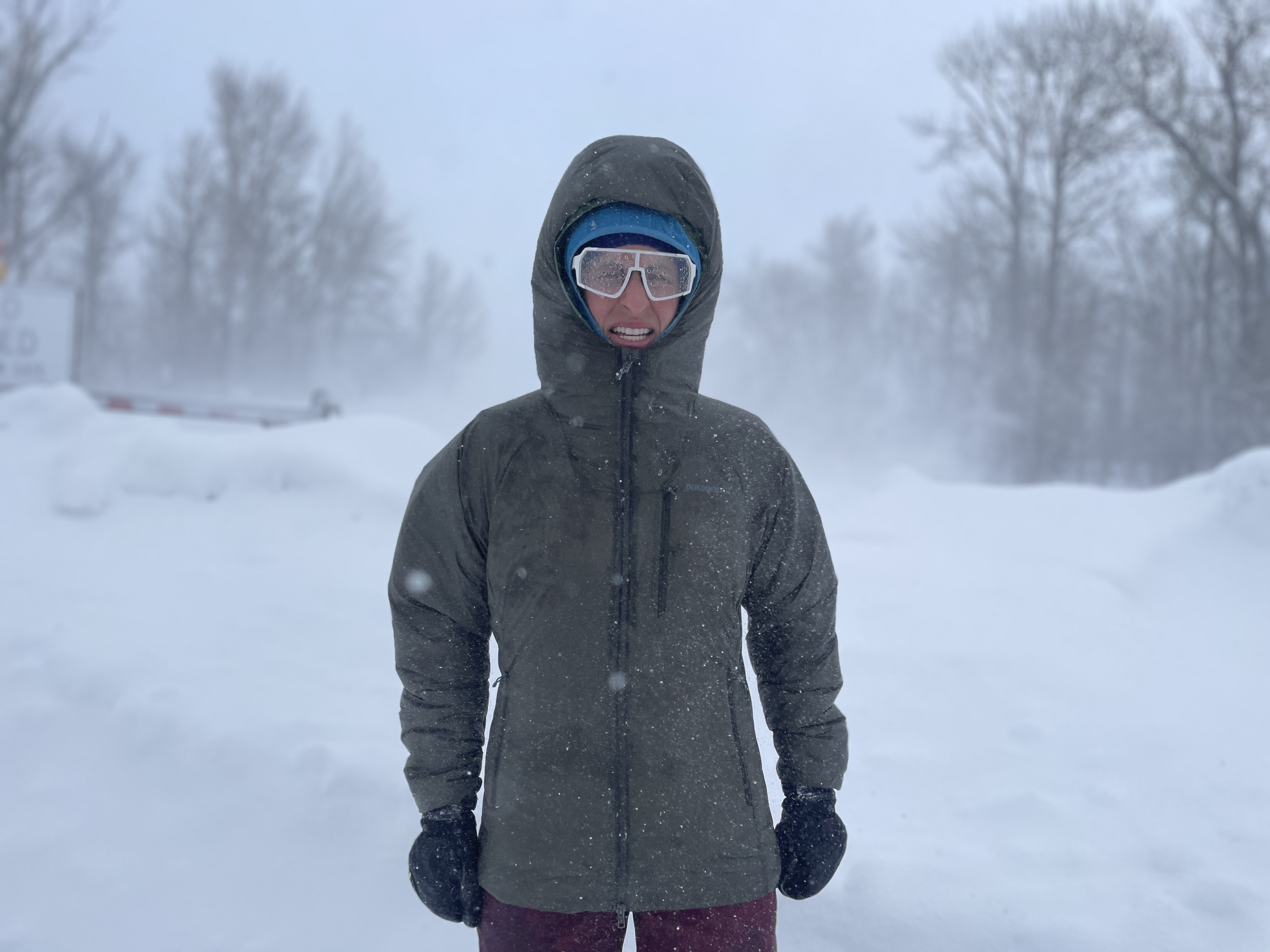
Pack Size
Sure, you plan to wear the jacket, not just pack it around. But for those times you need to ditch a layer or bring it just in case, pack size and weight matter. Synthetic insulation doesn’t tend to pack as small as down (although synthetic fill technology is rapidly improving).
While the Patagonia Micro Puff may not be the most durable jacket, it wins big on the packable scale. The Outdoor Research SuperStrand LT Hoody and TNF’s Casaval Hybrid Hoodie are other easy-to-pack choices.
Key Features: Pockets, Hoods, and More
Depending on your intended use and general needs, you’ll want to choose a jacket with the right array of features.
Pockets, hoods, adjustable hems, and elastic cuffs are all examples of common synthetic jacket features. Each of these has a unique purpose and value.
Pockets come in a wide range of sizes and shapes. From zippered hand-warmer pockets to low-profile chest pockets, the recommended jackets on this list offer a wide range of configurations.

Many synthetic jackets are available in either a hooded or non-hooded style. The best choice for you depends on your use. Hooded jackets are great in frigid or stormy conditions and for people who tend to feel cold in the ears, head, and face. Unhooded options are generally best for everyday use around town or in-bounds resort skiing.
Price & Value
At the end of the day, you want to get a good deal. More than just the lowest price tag, a jacket’s value stems from its usefulness. Carefully consider how you’ll use your jacket and then look for features that fit your needs. Helmet-compatible hoods, pockets, and materials become important considerations. Also, if you plan to wear your jacket regularly, it’s worth investing more. Spending a few extra bucks now will afford you many seasons of warmth and comfort outdoors.
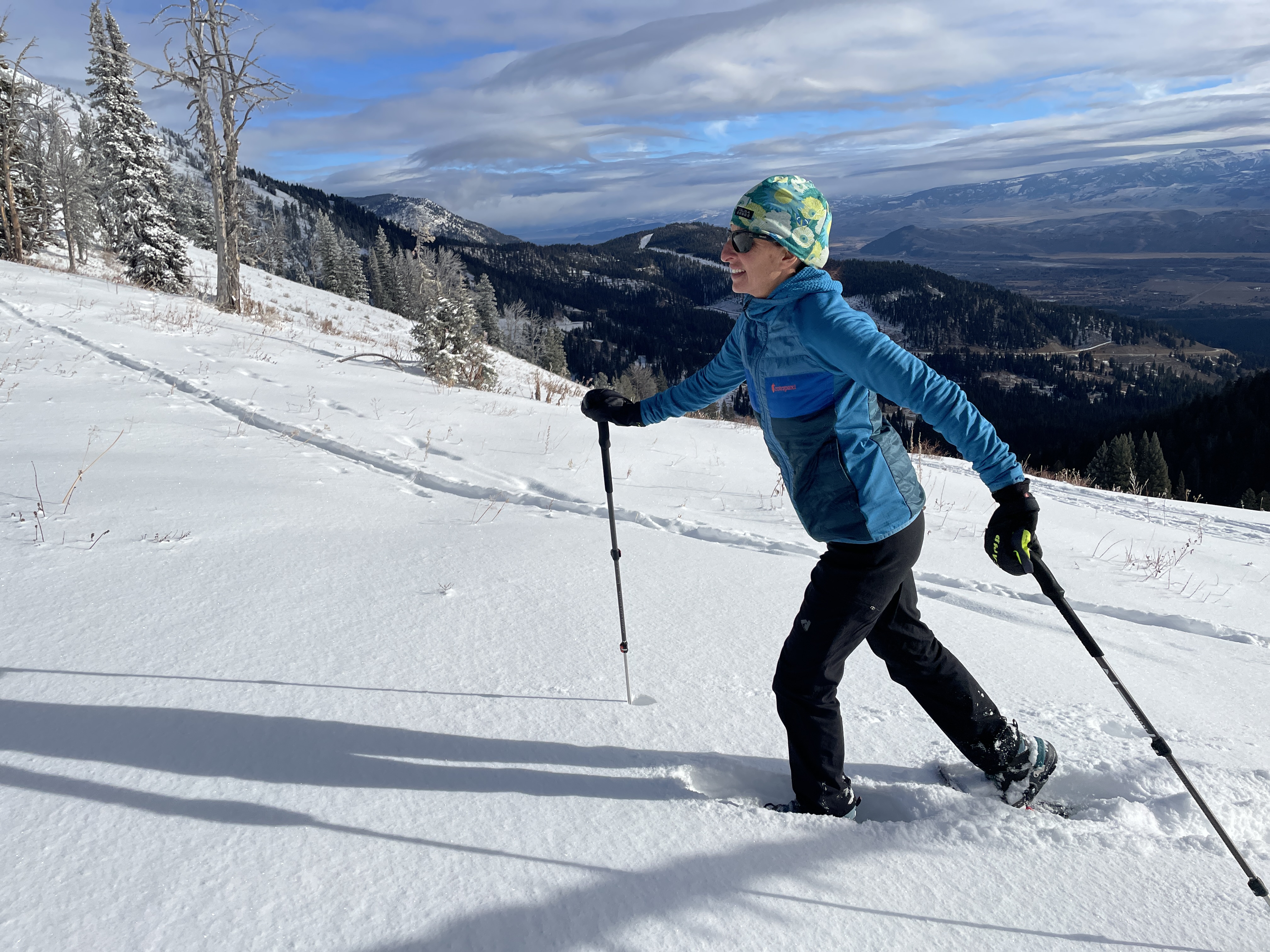
Budget
Budget picks hover in the $150-200 range. The inexpensive jackets will get you around town and perform well on light adventures but may not have the same mobility, breathability, and performance as pricier models.
Fortunately, our top budget pick, the Cotopaxi Capa Hybrid Insulated Hooded Jacket ($180), is one of our favorite jackets. It’s our go-to for vigorous adventures in a wide range of temperatures, and it doesn’t sacrifice mobility, warmth, or performance despite its super-approachable price tag. The same goes for the Outdoor Research SuperStrand LT Hoody, an ultralight option that outperforms many on this list.
Mid-Tier
Most of the synthetic jackets on this list fall in the $250-300 range. Jackets like Black Diamond’s Solution Hoody ($299) and Arc’teryx’s Atom Hoody ($300) will stand up to loads of abuse and help regulate temperature while keeping pack weight down on truly technical backcountry missions.
For the fashion-forward who want technical performance in a stylish option they can wear around town, then The North Face Casaval Hybrid Hoodie from this list is an ideal choice. Our best value winner, the REI Co-op Stormhenge 850 ($279), is a beast of a jacket that is warm, water and windproof, and durable for an affordable price.
While it’s almost as warm as Patagonia’s DAS Parka and Arc’teryx Atom Heavyweight Hoody, the Stormhenge is not as technical and does not boast as many features or durability as these premium options.
Premium
Synthetic jackets that come in above $300 may deliver more durability or warmth, but not always. The Patagonia DAS Parka ($449) and the Arc’teryx Atom Heavyweight Hoody ($350) are the heaviest and warmest jackets on this list.
The Patagonia Micro Puff Hoodie ($329) is not nearly as warm as any of the above-mentioned jackets. However, it is extremely lightweight, packable, and wind-resistant, all features that often contribute to price.
Consider the full range of conditions you plan to encounter on your trip and choose a jacket that will hold up to whatever you plan on putting it through.

Frequently Asked Questions
Synthetic jackets are used in all sorts of situations where comfortable and reliable warmth is needed. From the ski hill to the jogging path, synthetic jackets are a modern and effective tool in the fight to stay warm.
Compared to down jackets, synthetic jackets tend to be slightly heavier and less vulnerable to moisture-related warmth loss. Elite mountaineers use synthetic jackets, as do city dwellers on their way to buy groceries.
On this list, we’ve divided our recommended jackets into two unique categories. For maximum warmth, check out our synthetic insulated jacket category. If you’re looking for a jacket that can regulate your temperature and breathe during active use, check out our active insulation category.
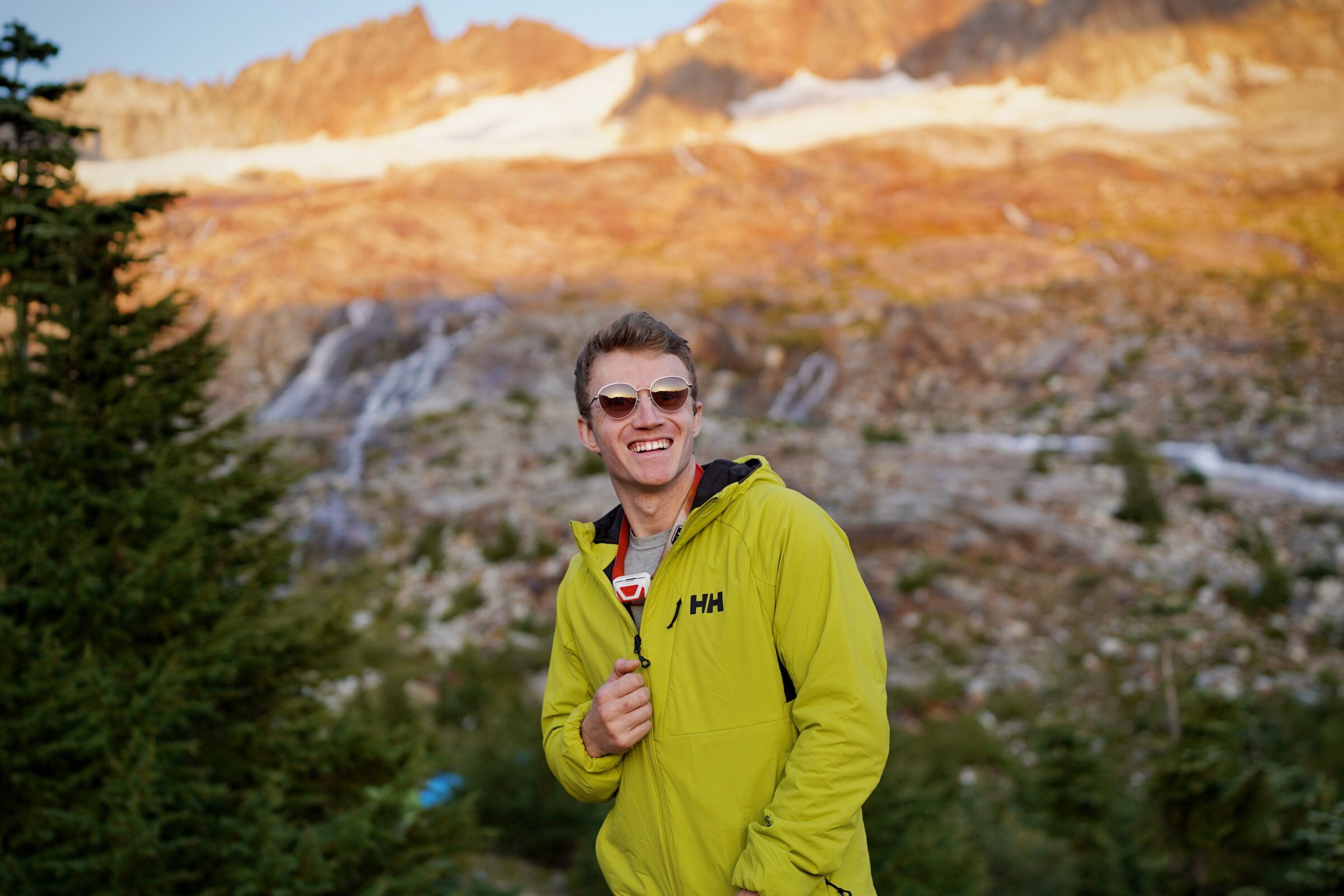
Compared to down, synthetic insulation is slightly heavier, slightly cheaper, and less likely to lose its effectiveness in a rainstorm. Unlike down, synthetic insulation is able to retain its warmth when wet.
When dry, however, synthetic insulation cannot quite match the miraculous warmth-to-weight ratio of down. In other words, synthetic jackets need to be a little heavier to achieve the same level of warmth.
Many skiers wear synthetic insulated jackets as a midlayer beneath their waterproof outer shells. On cold days at the resort, a warm and puffy jacket can be the difference between comfort and misery.
For backcountry skiing, breathable layers are the way to go. During uphill hikes along the skin track, you’ll want layers that can let some of your body heat escape in order to stay cool and prevent sweating.

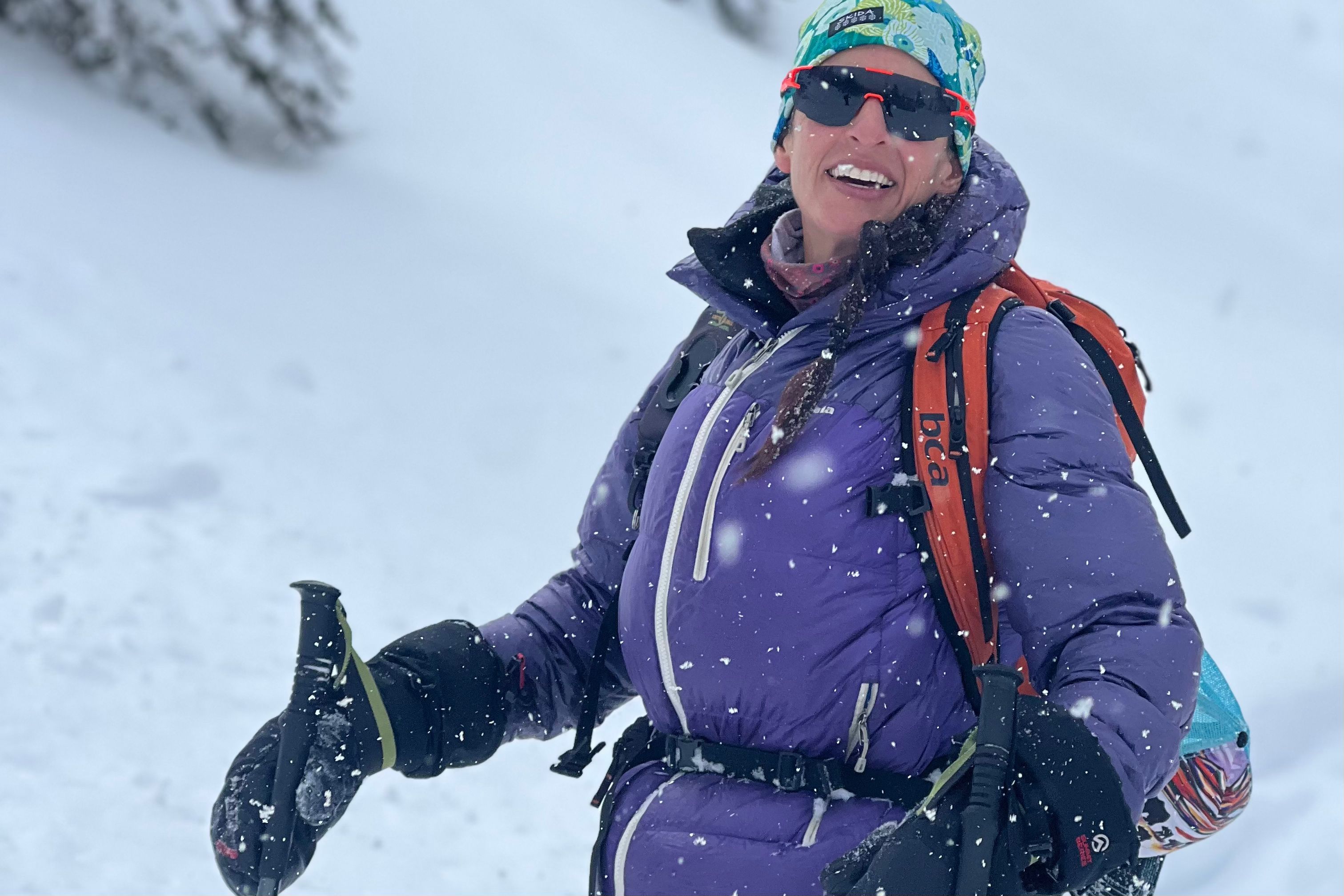
The Best Down Jackets of 2025-2026
We tested the best down jackets from Arc’teryx, Patagonia, Mountain Hardwear, and more to help you find the right jacket for your needs and budget.

The Best Fleece Jackets of 2025-2026
We tested the best fleece jackets from Patagonia, REI, Black Diamond, Rab, and more to help you find the best option for your needs and budget.

